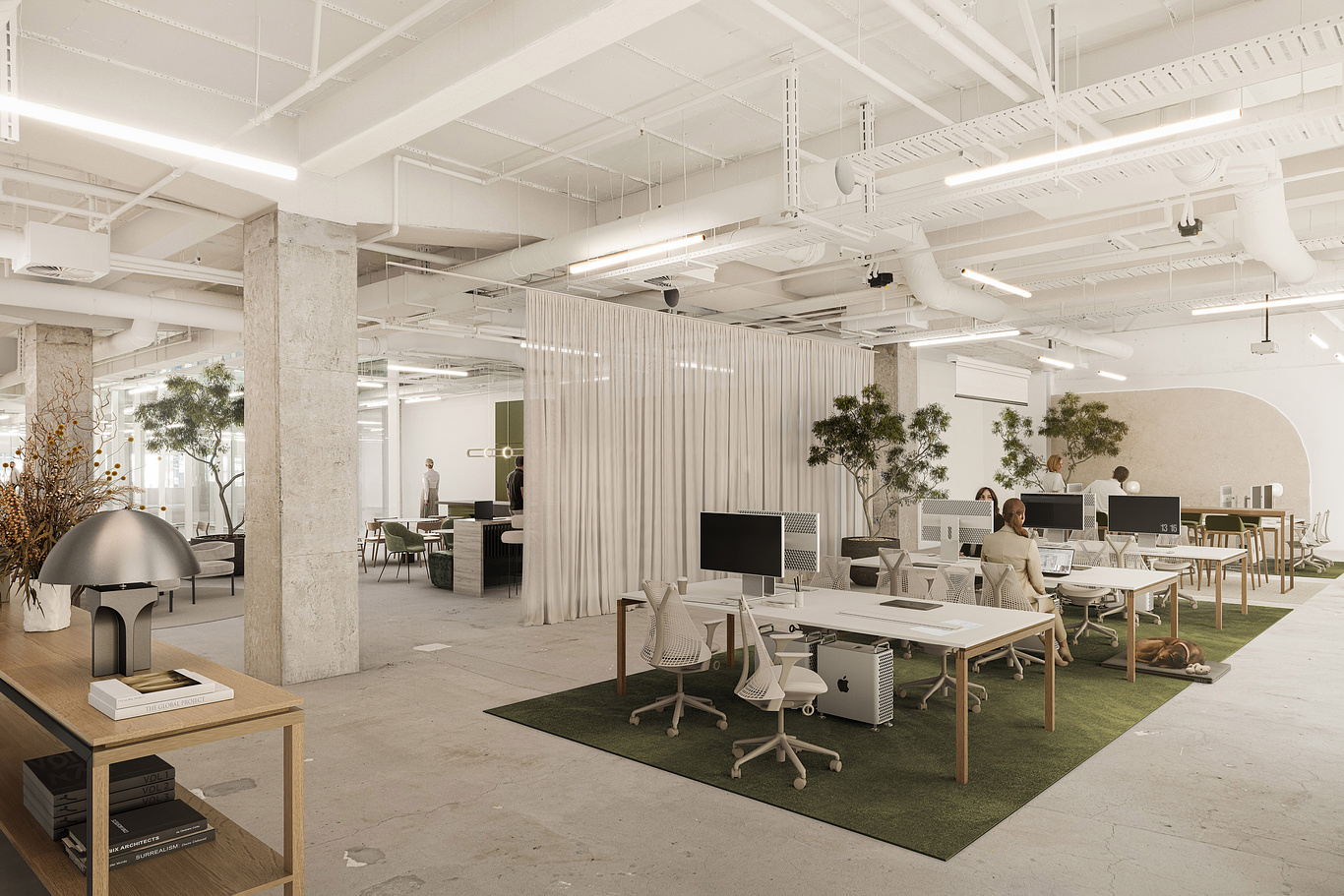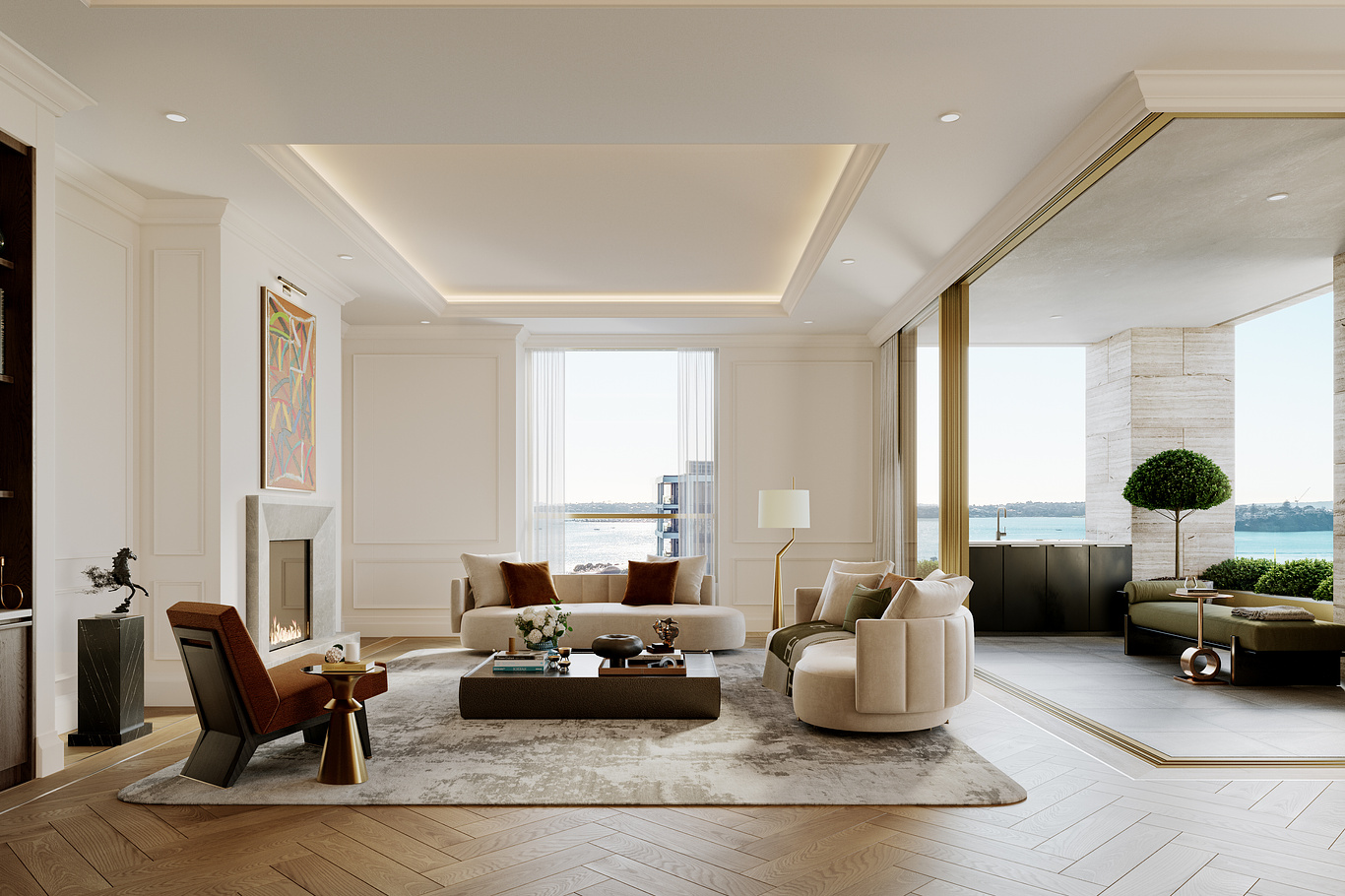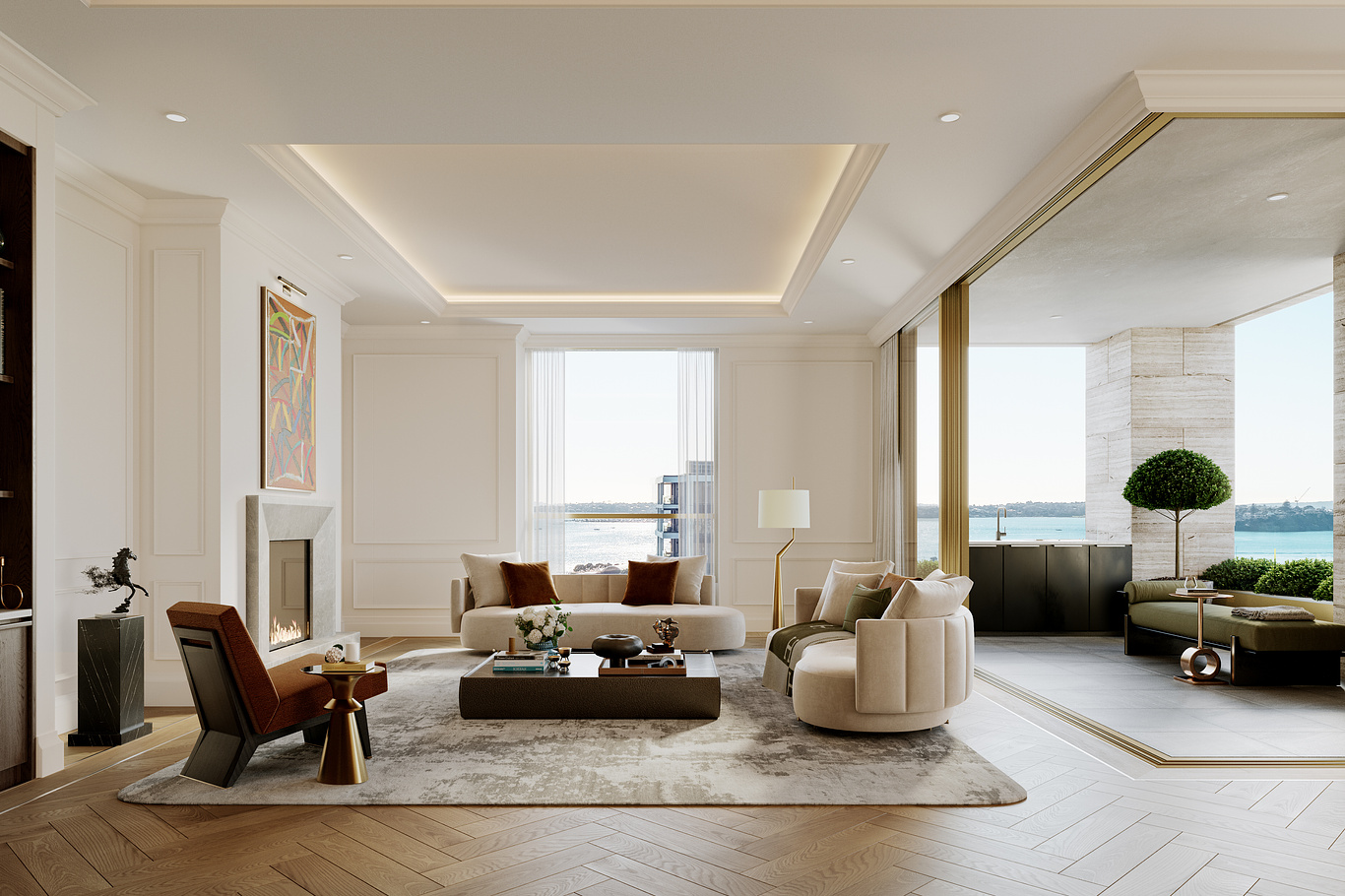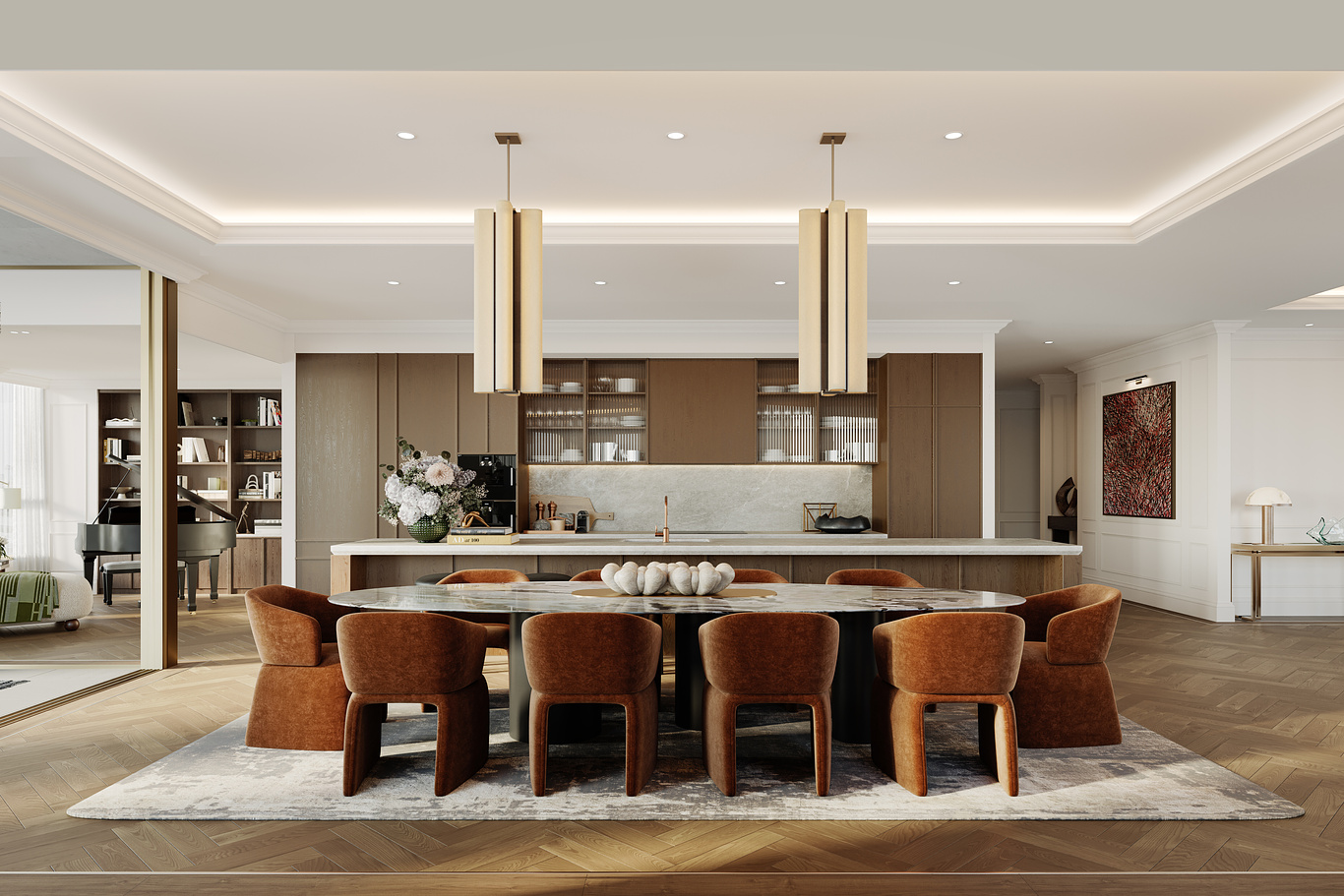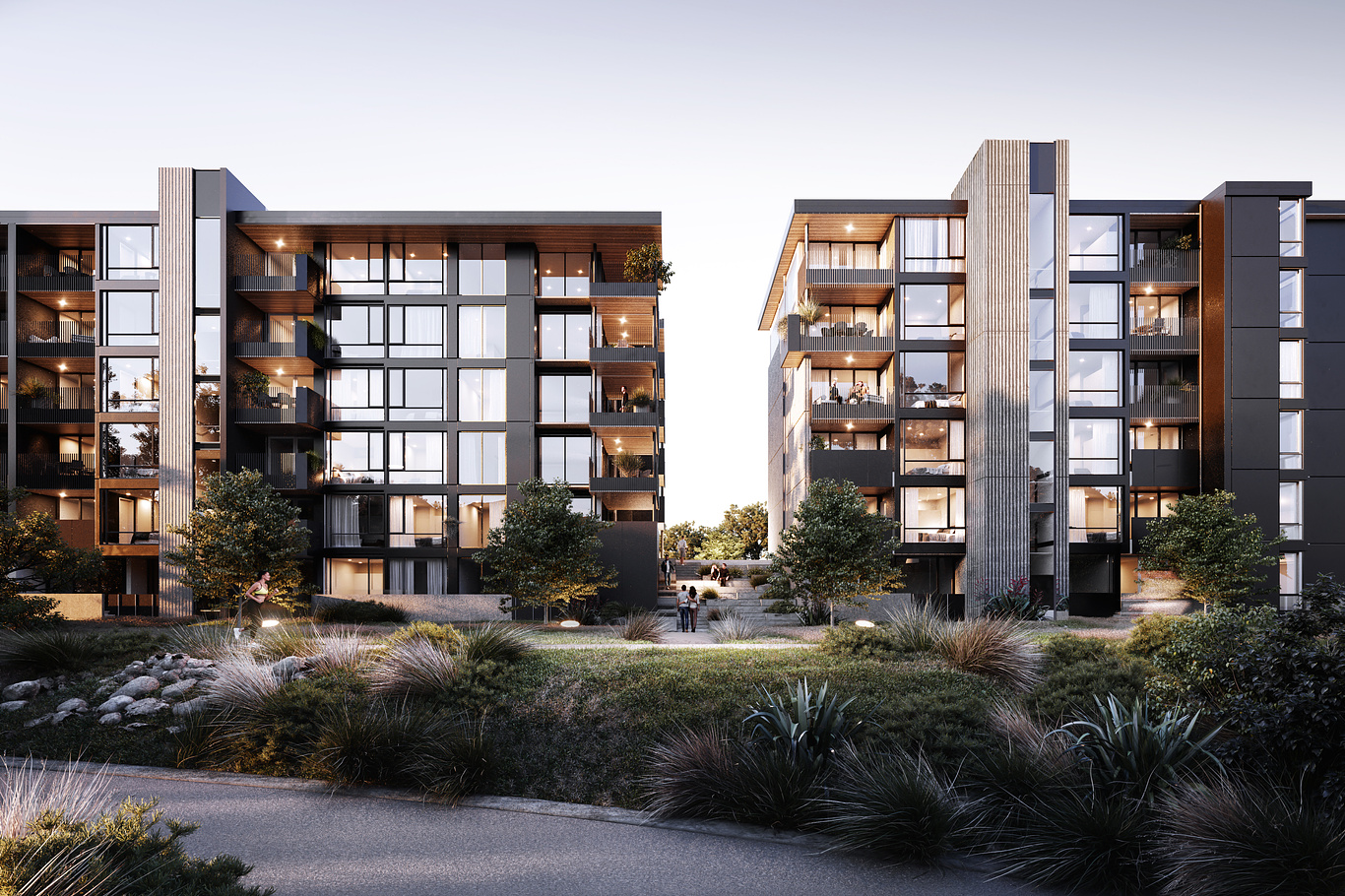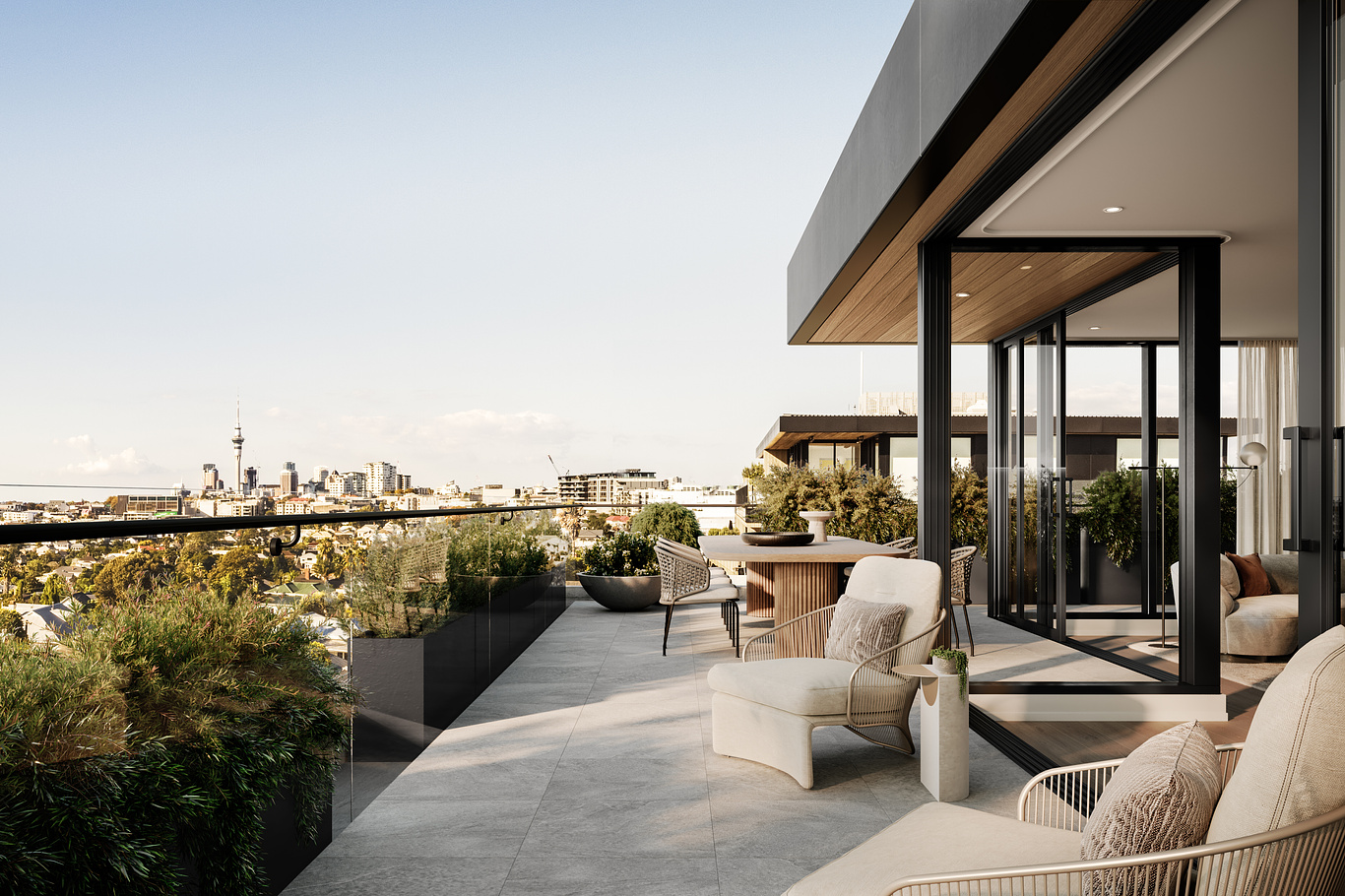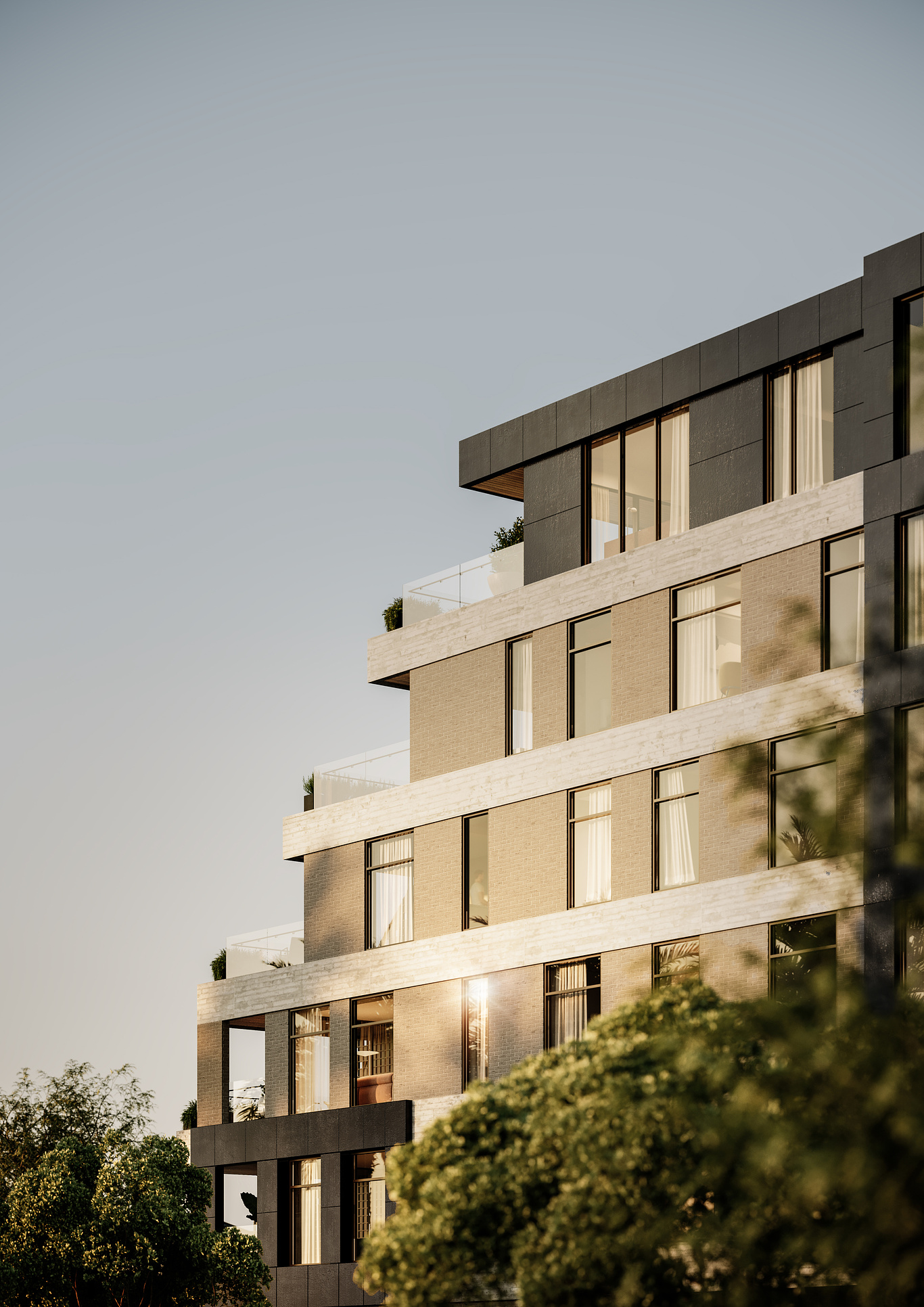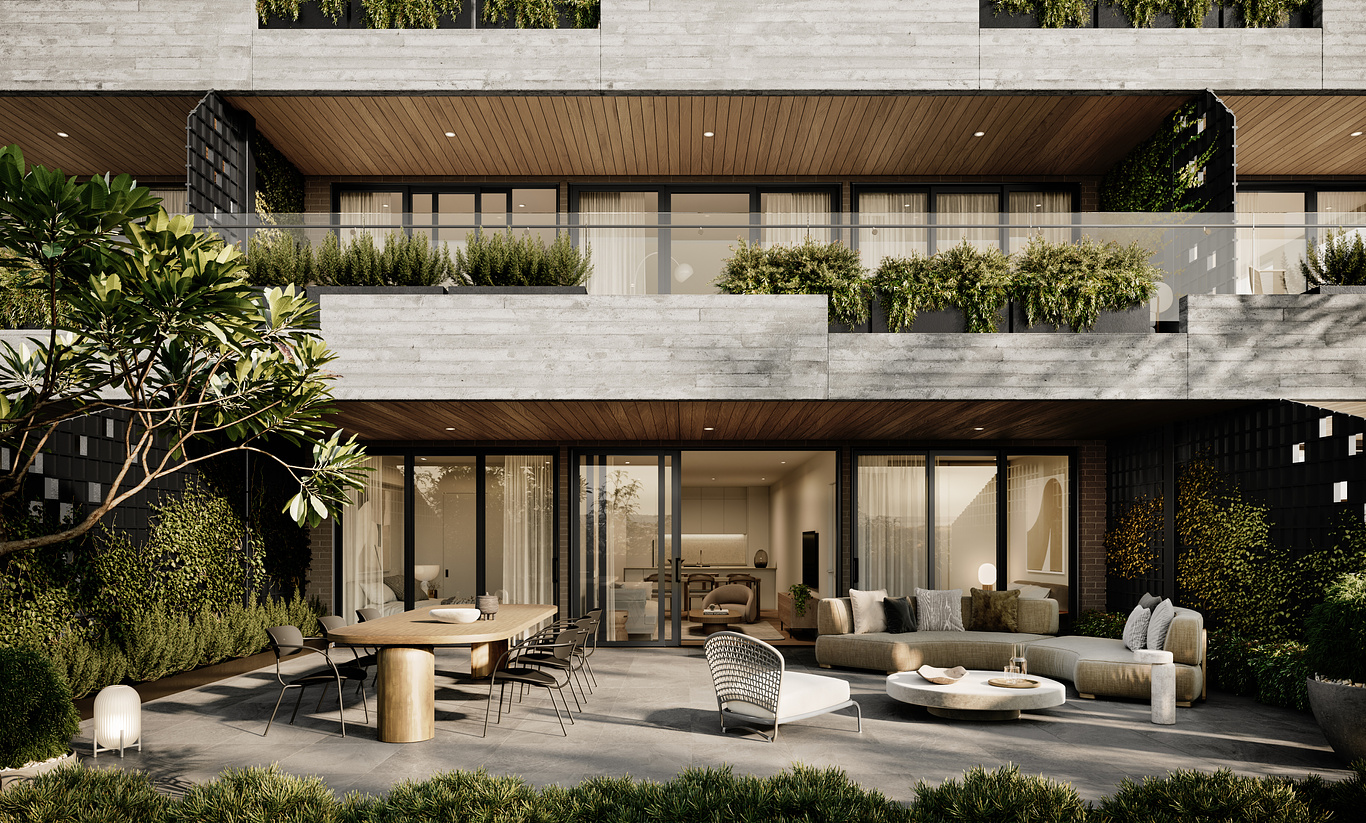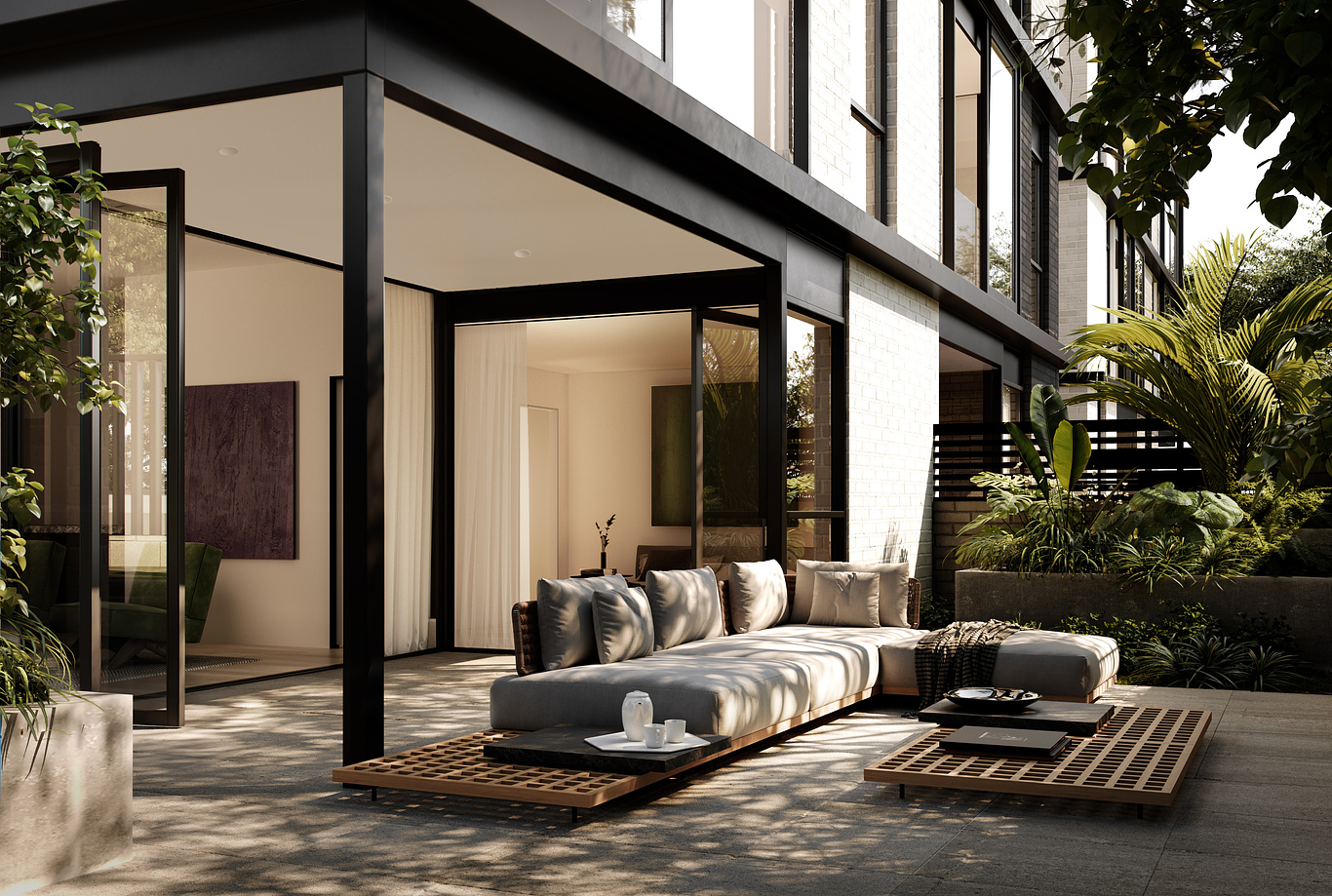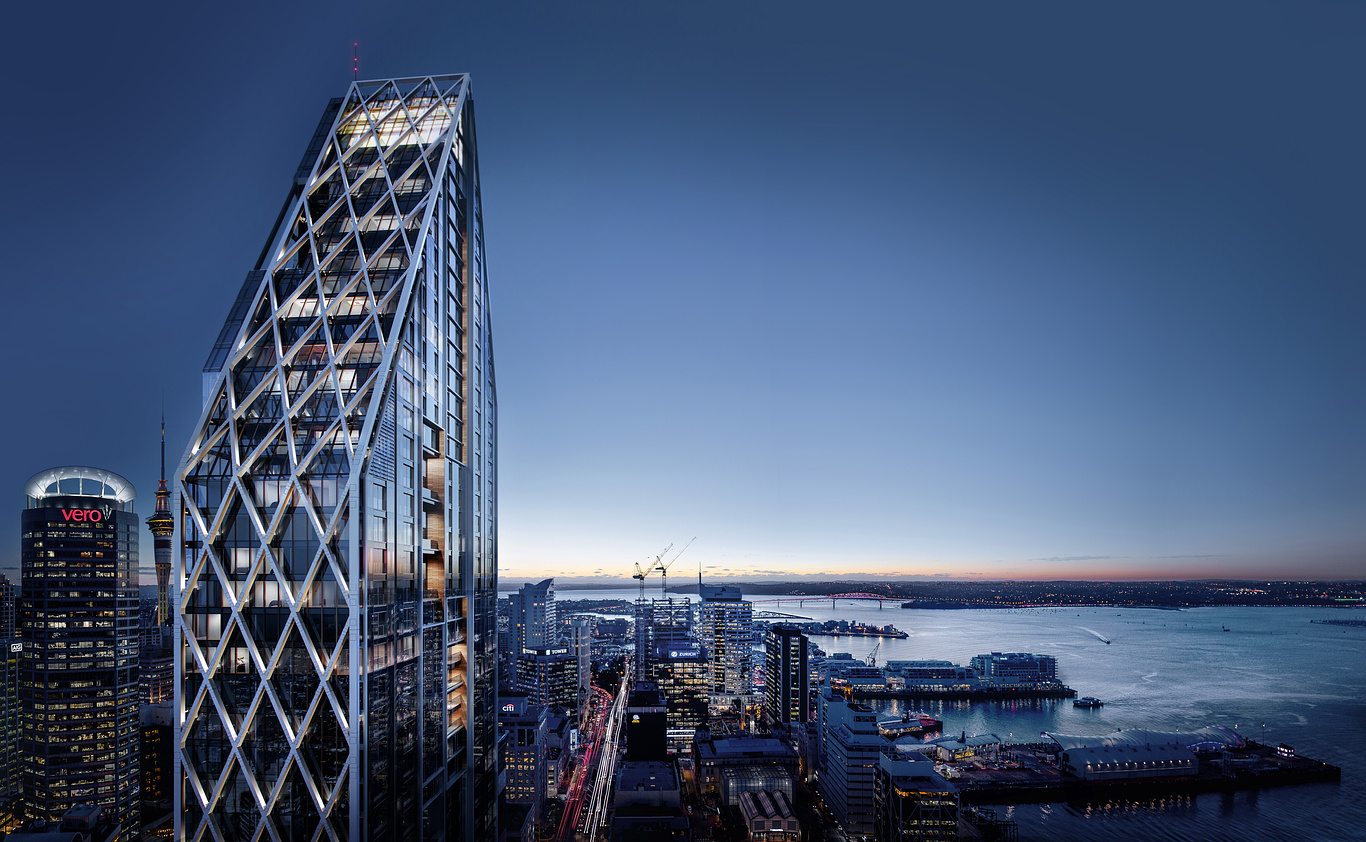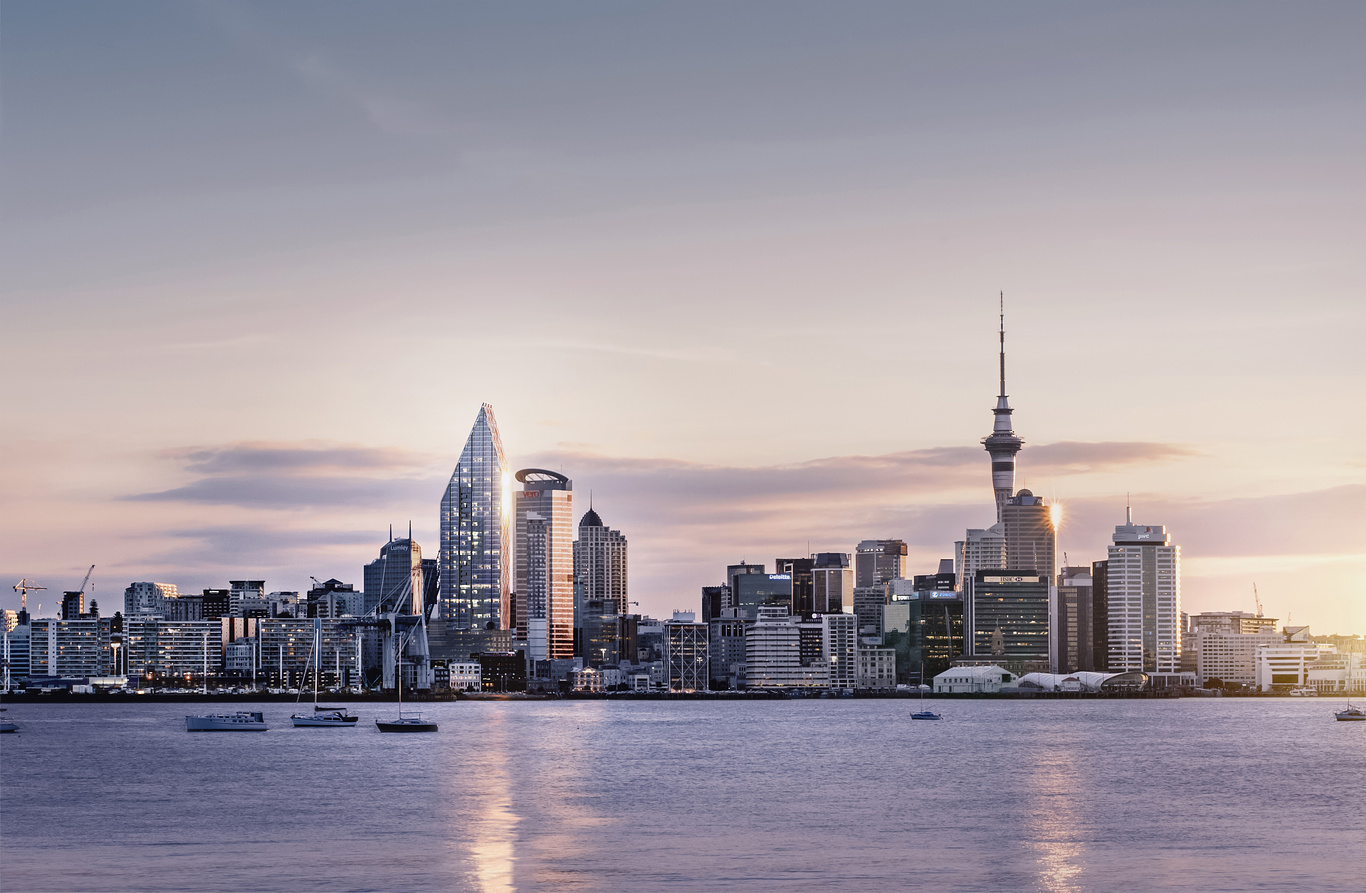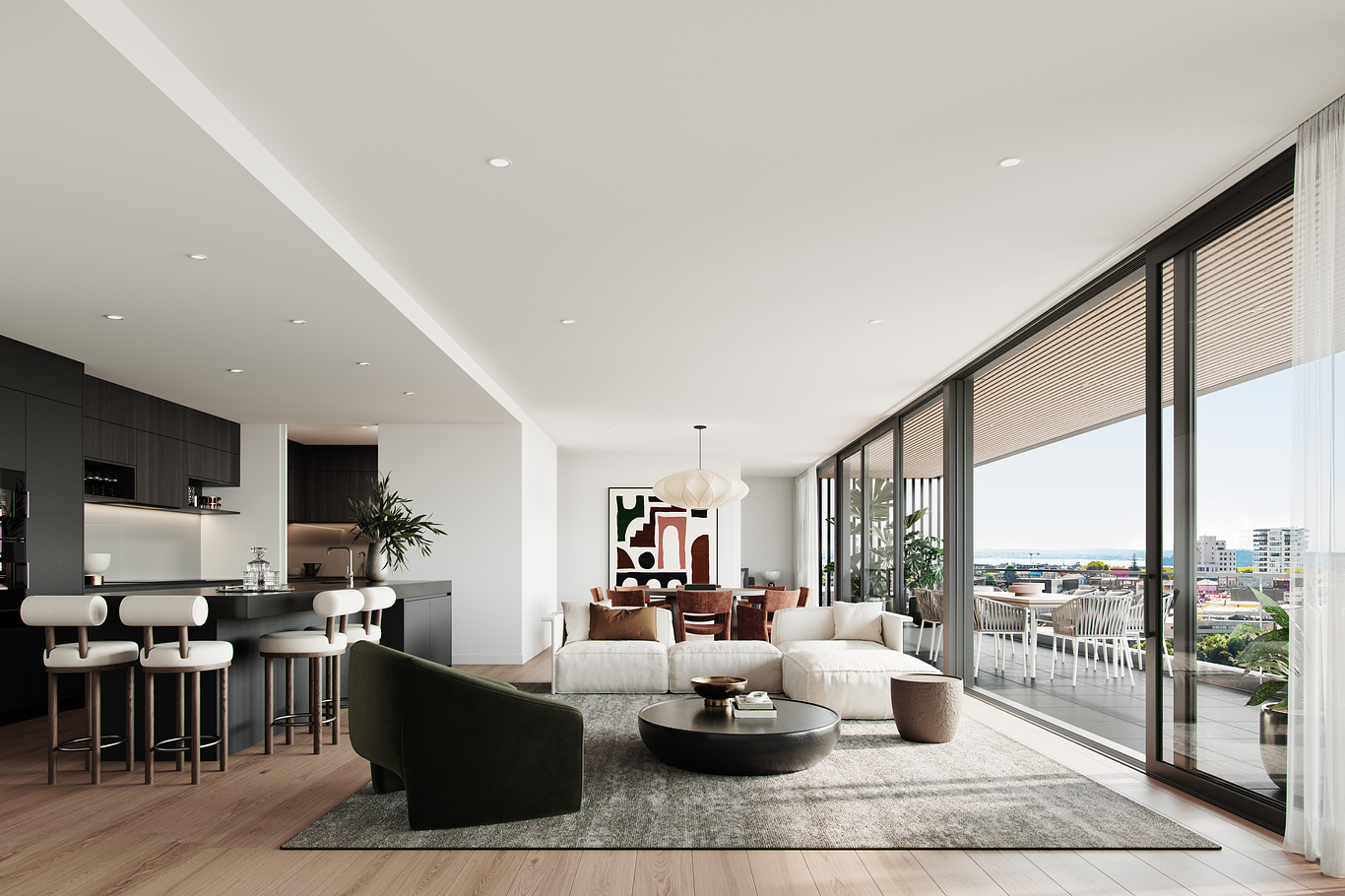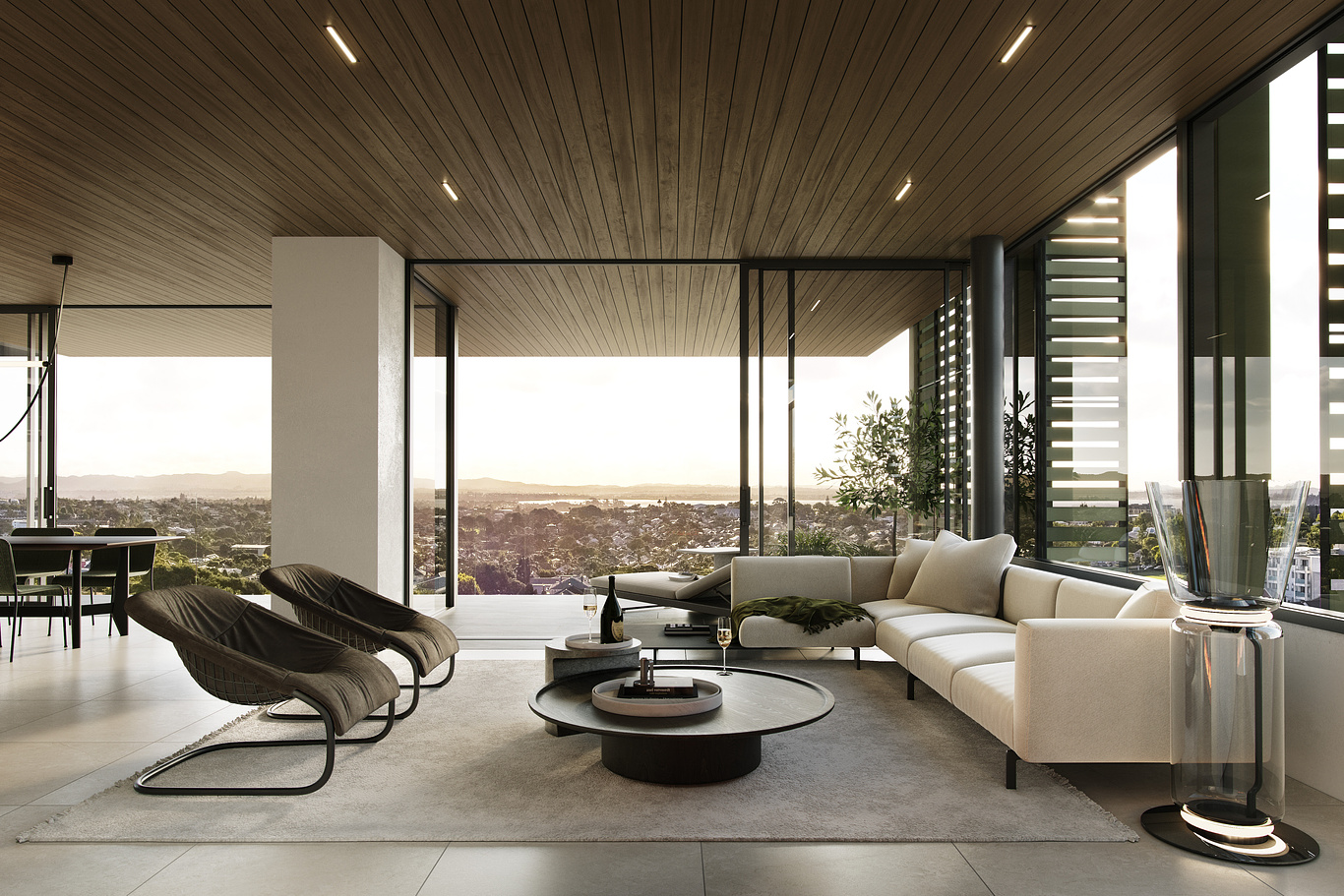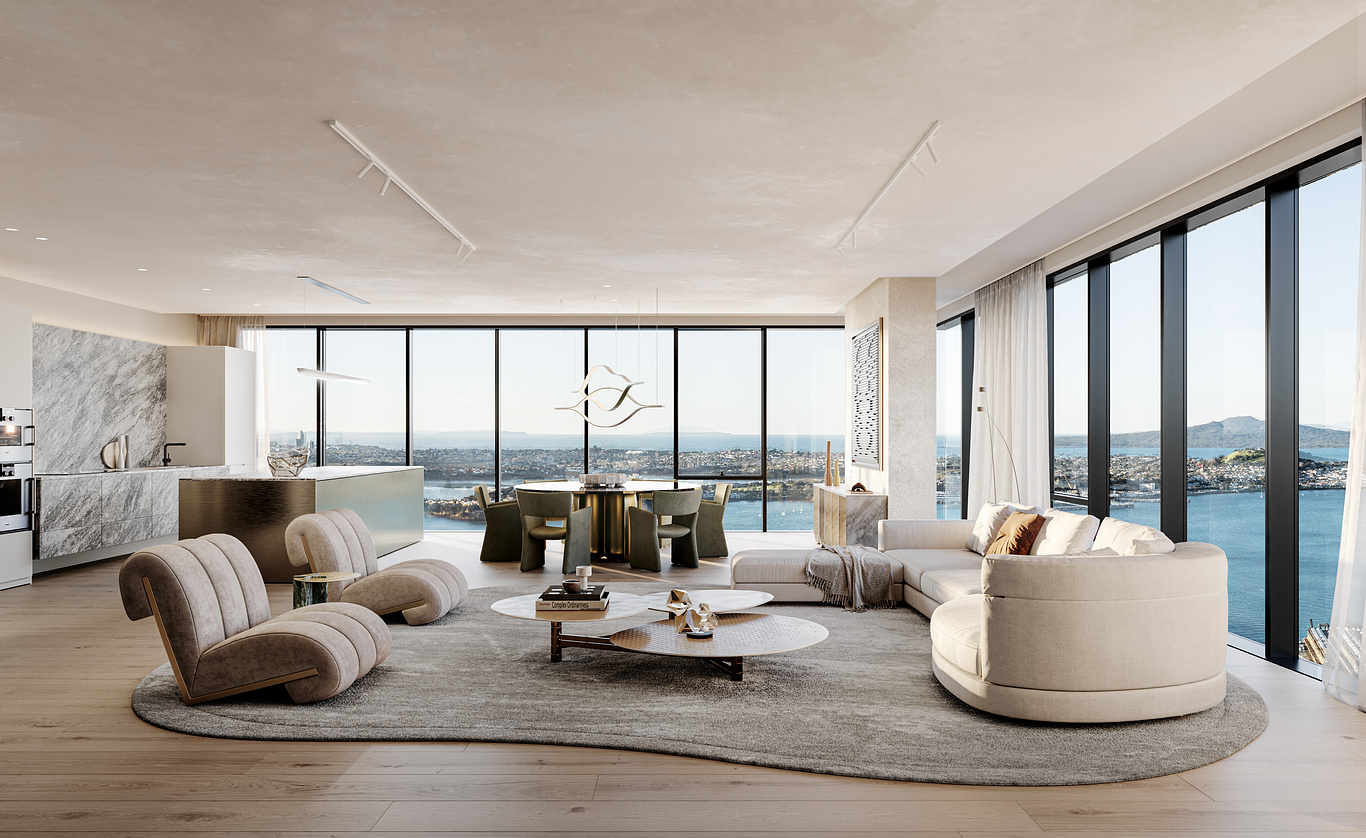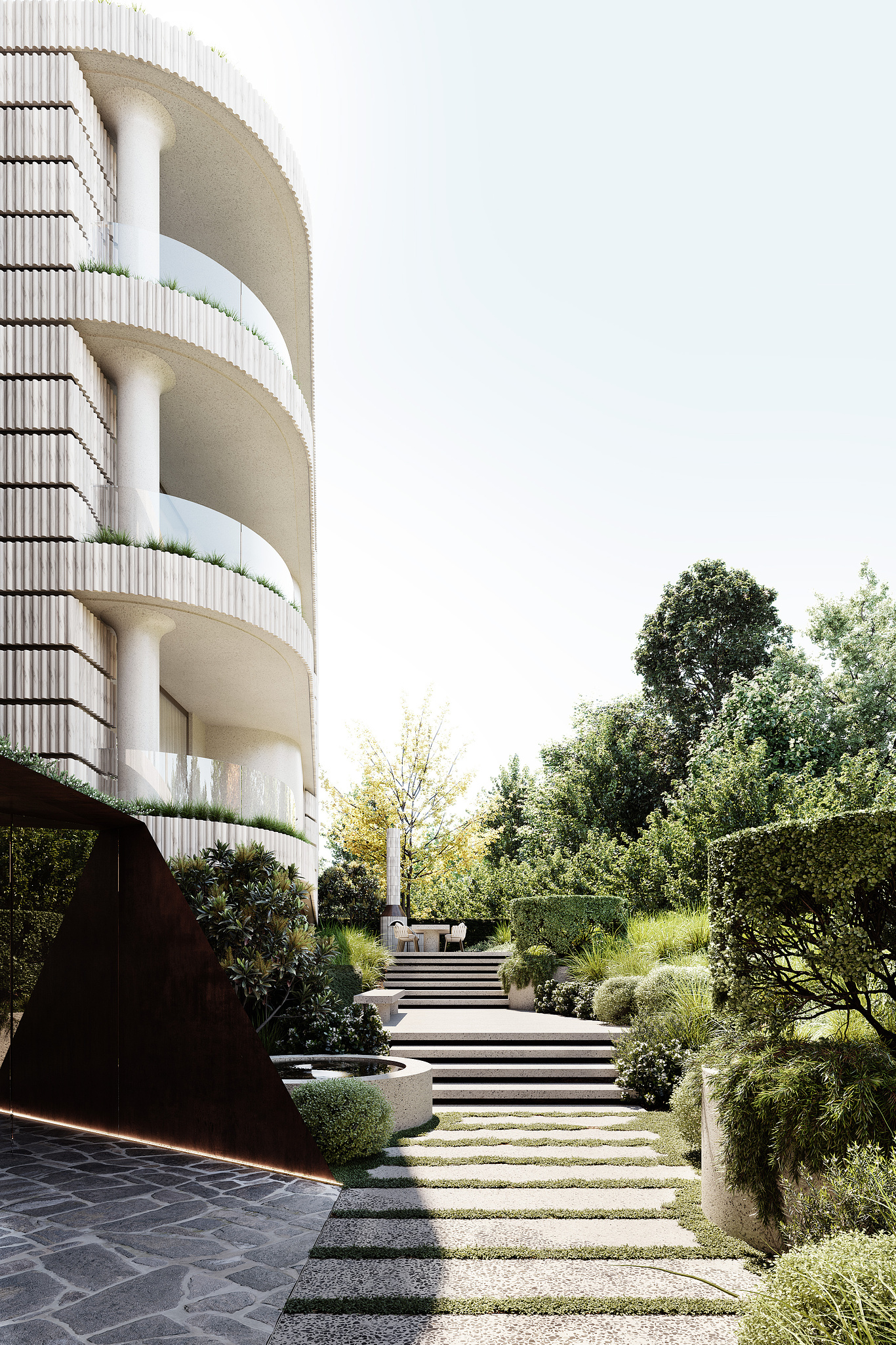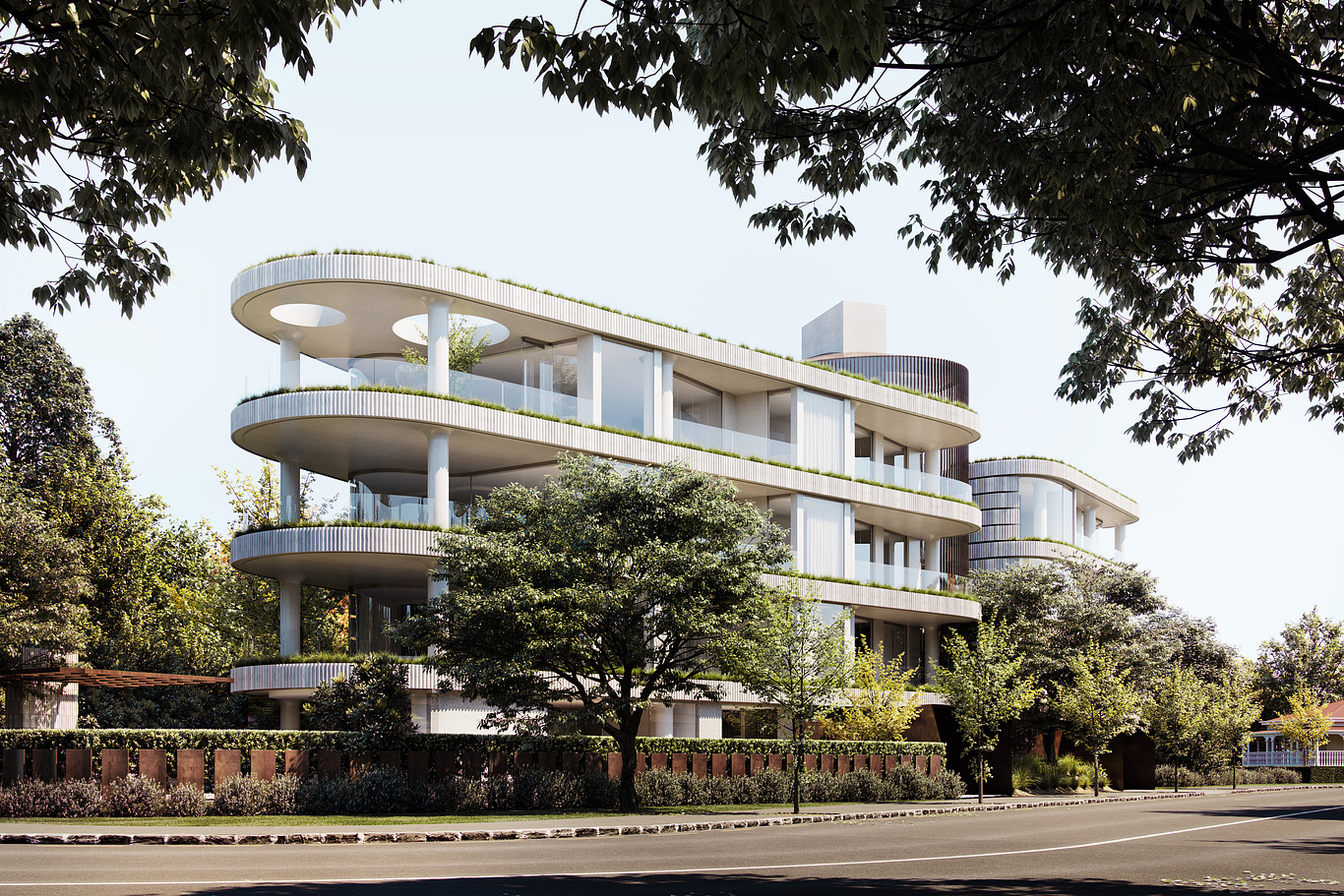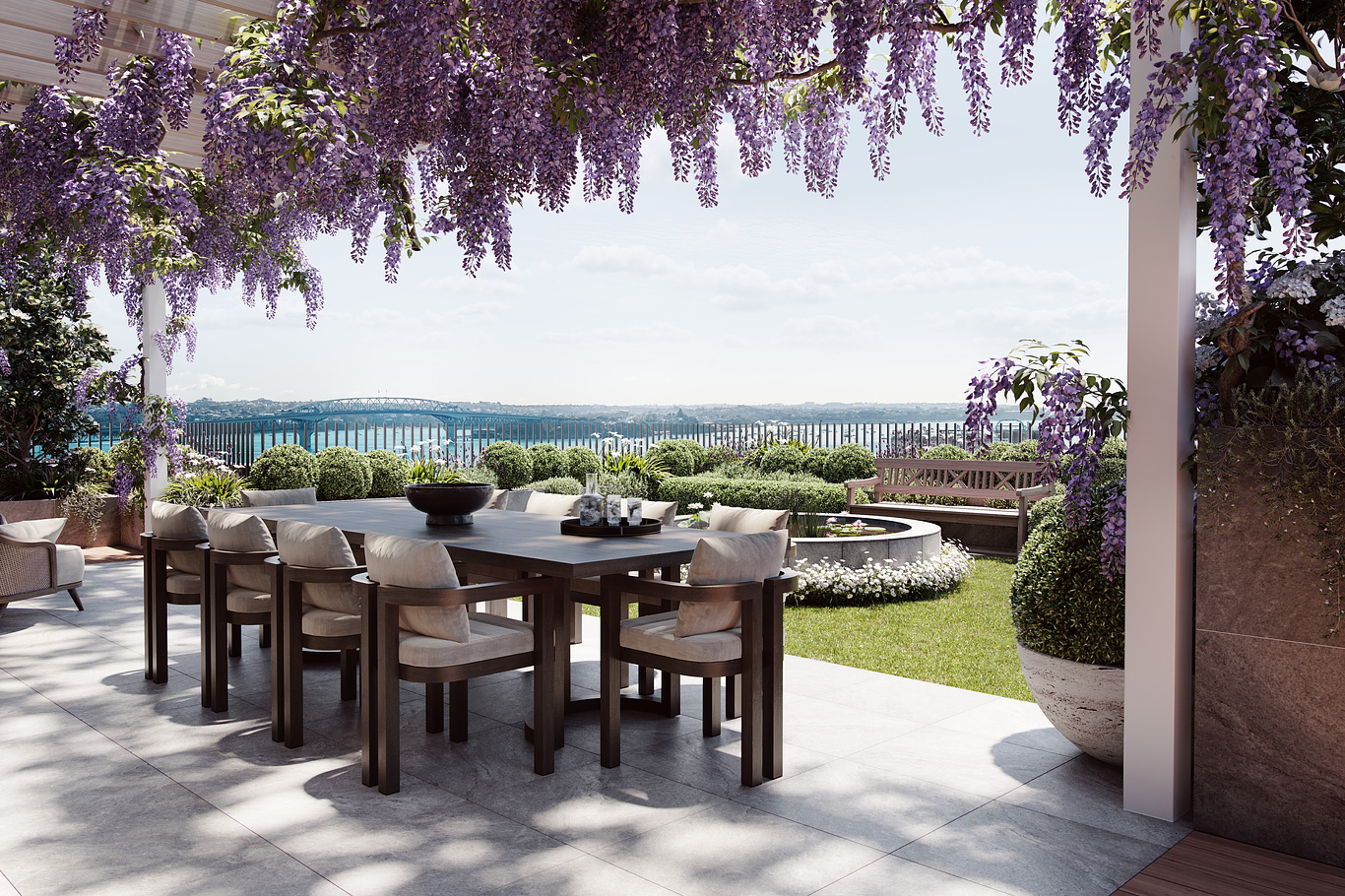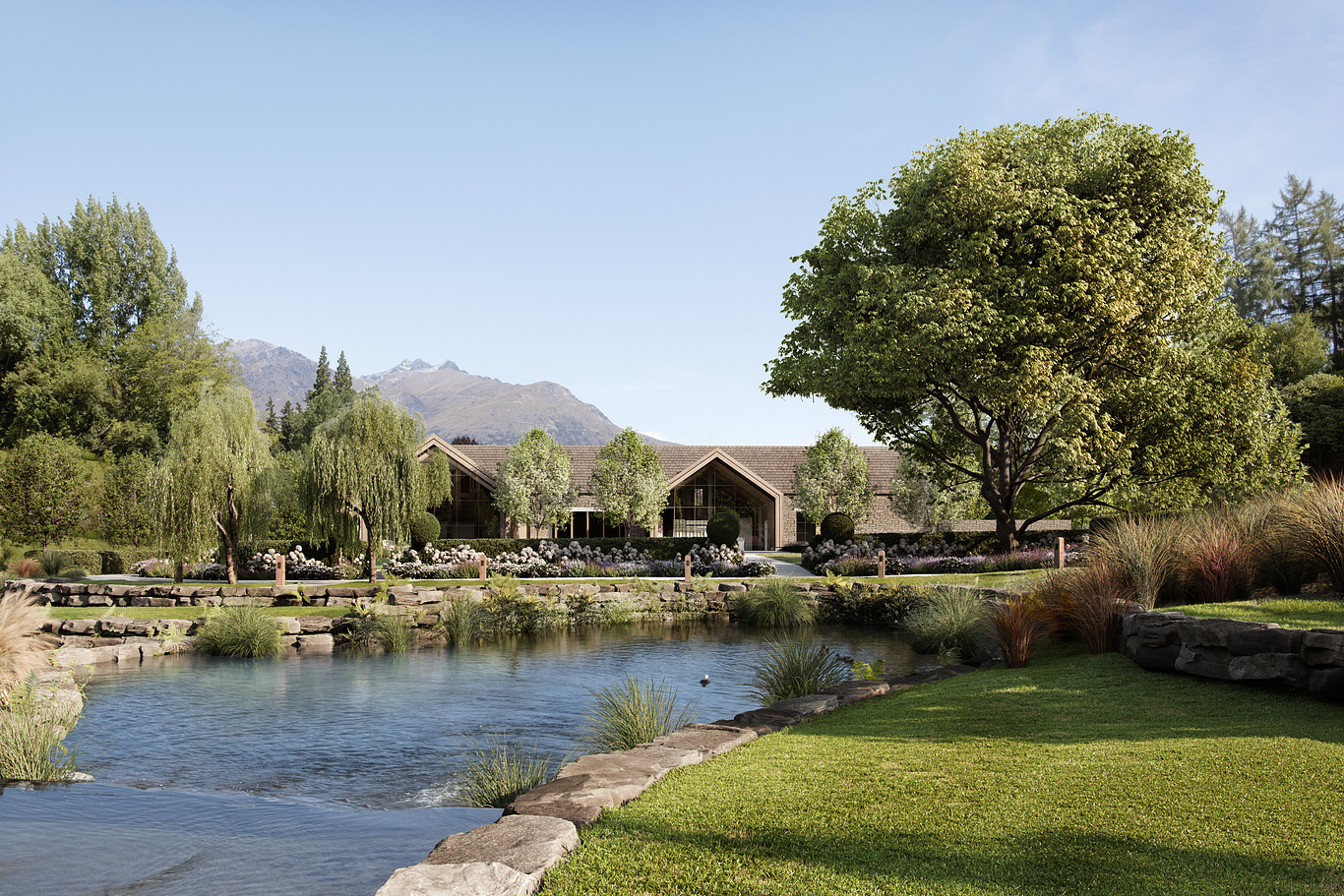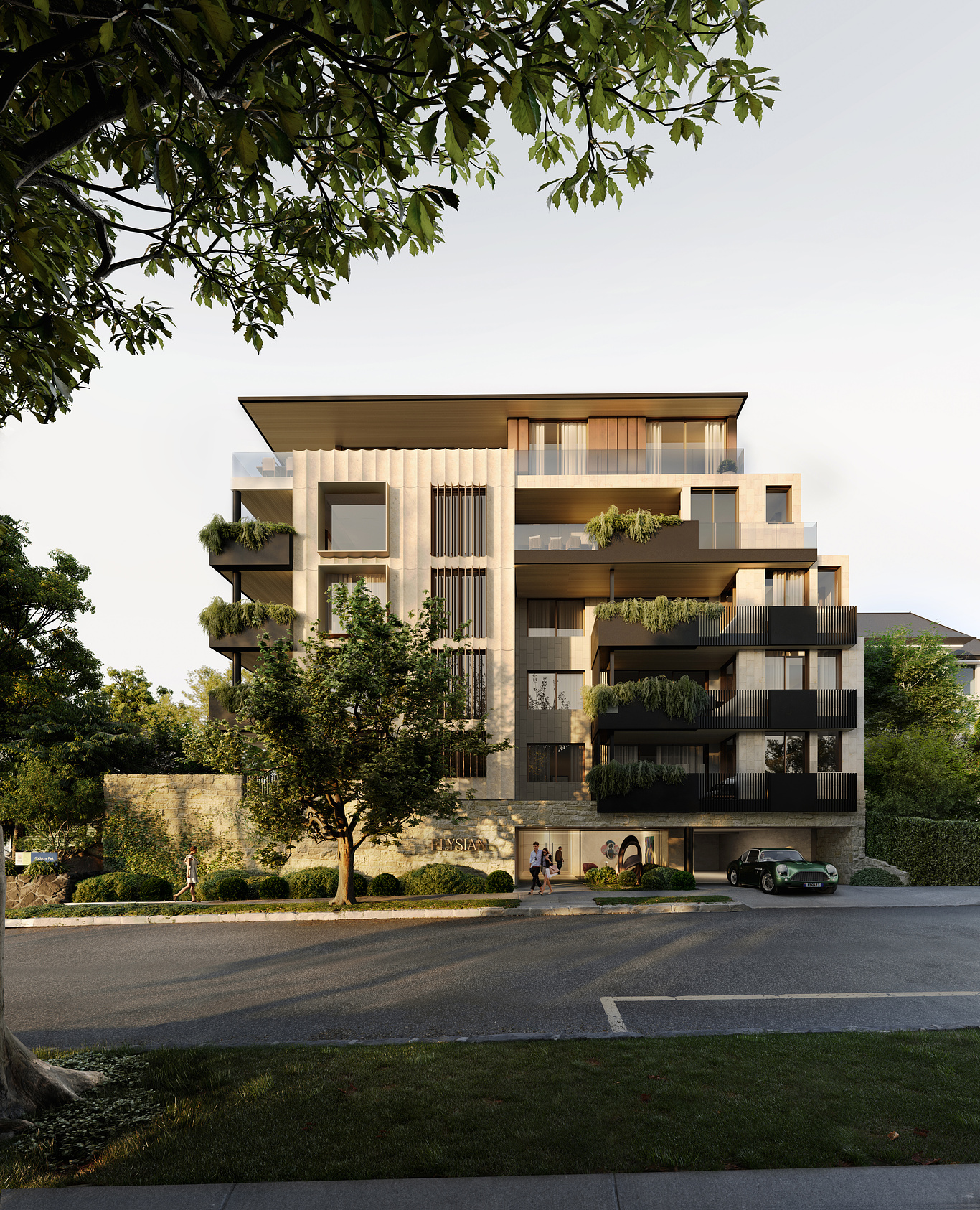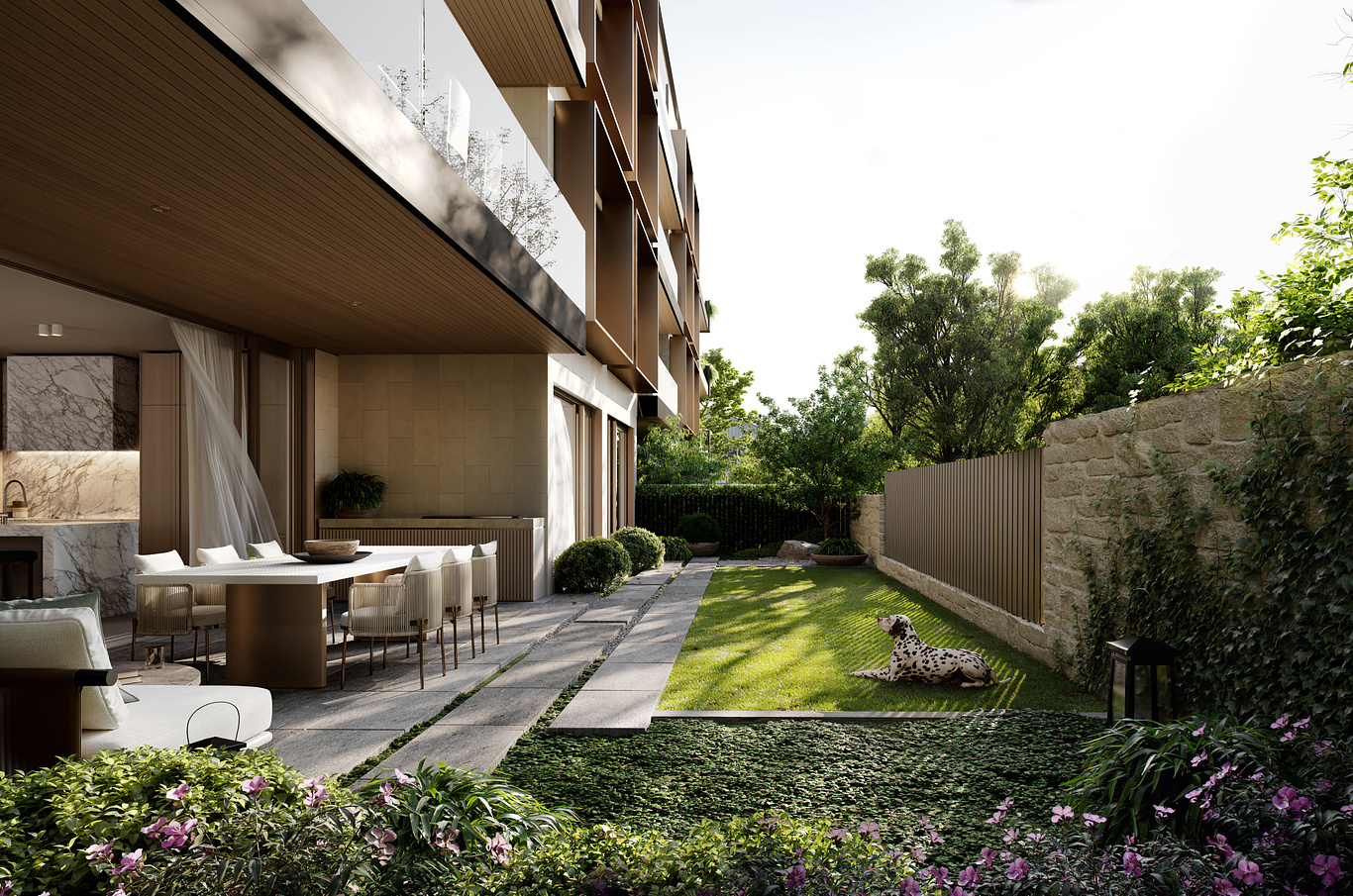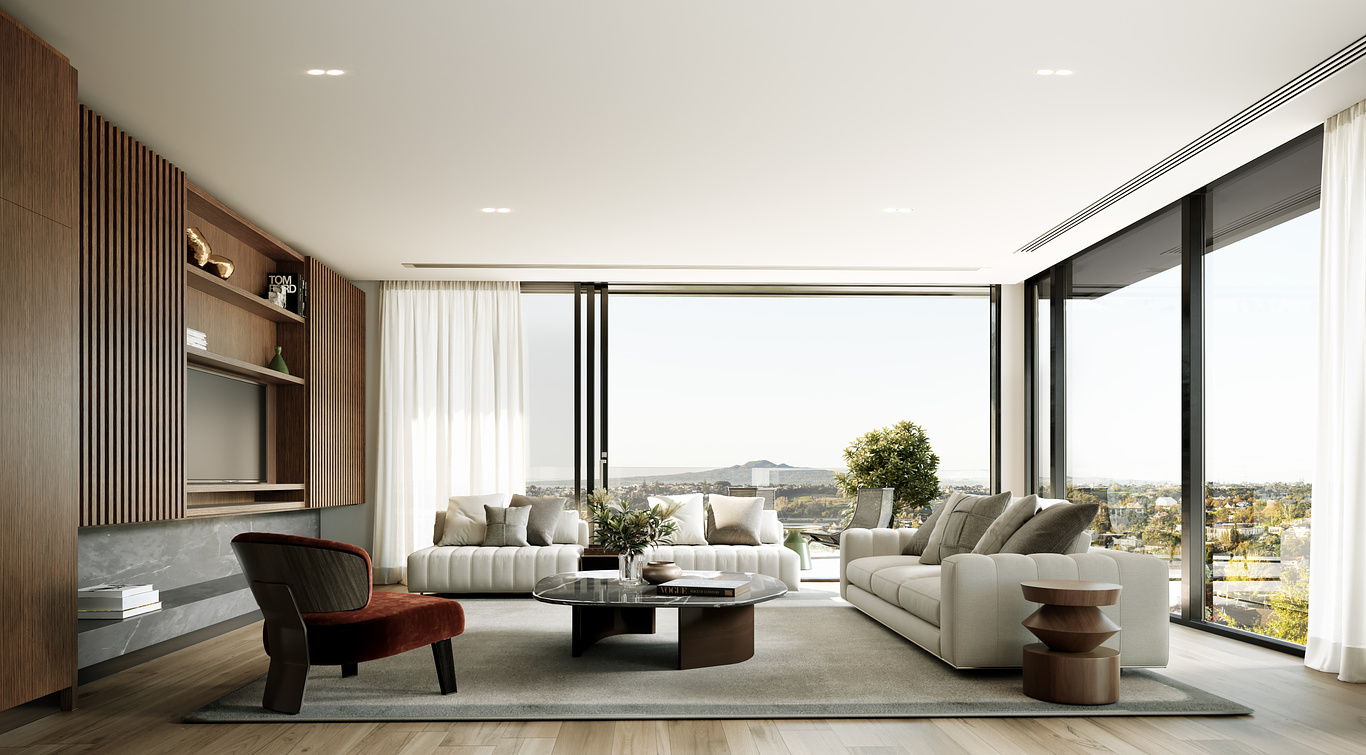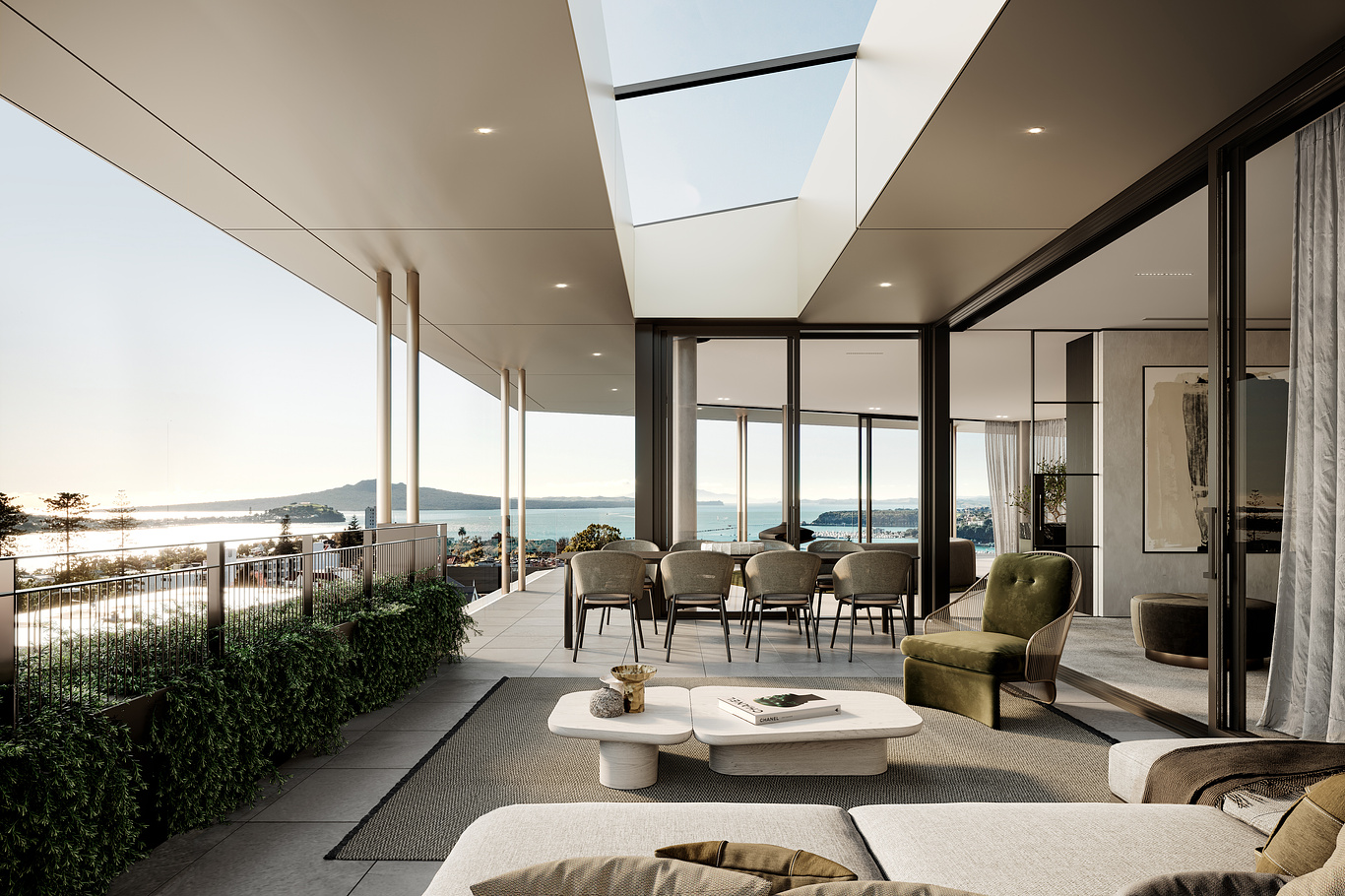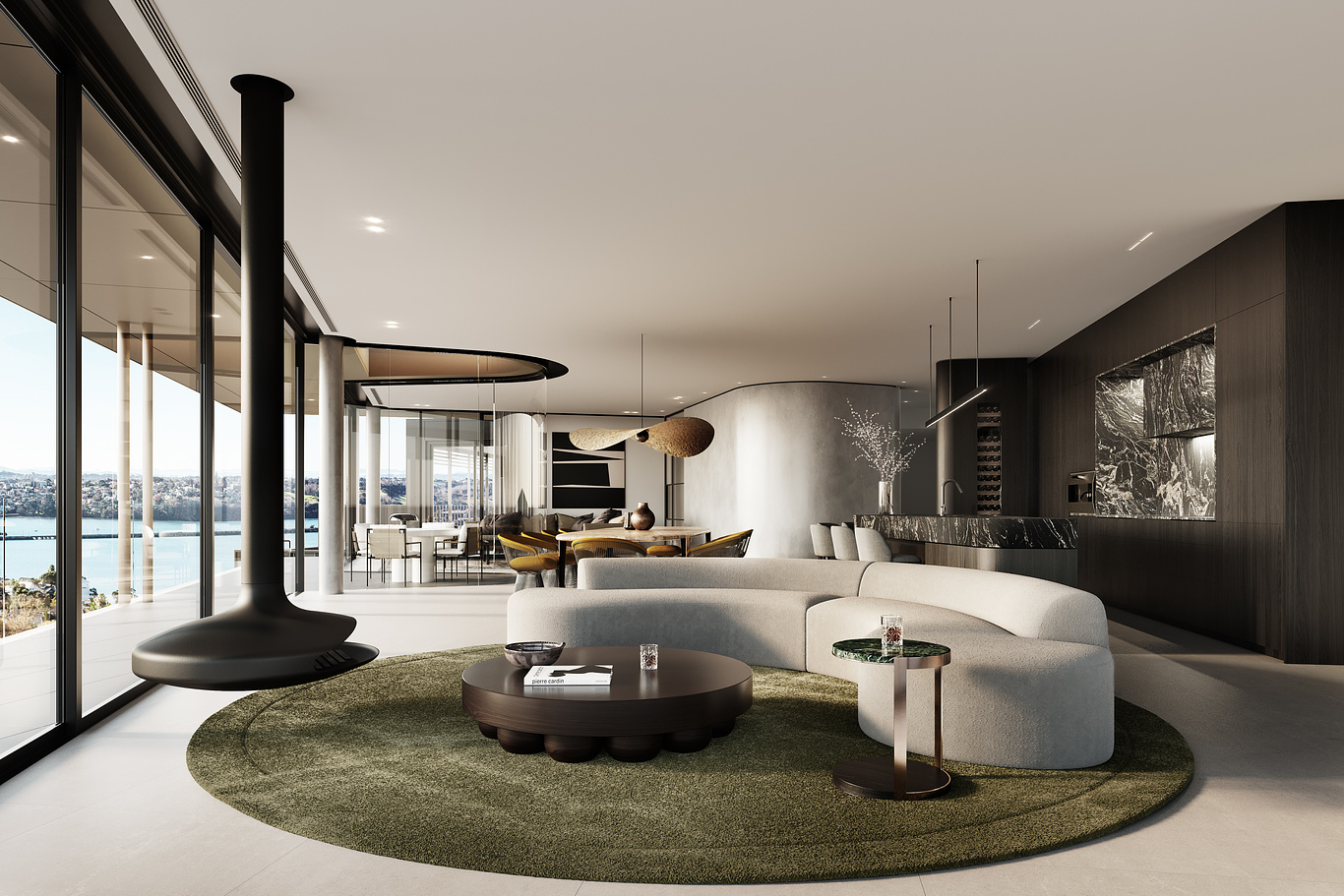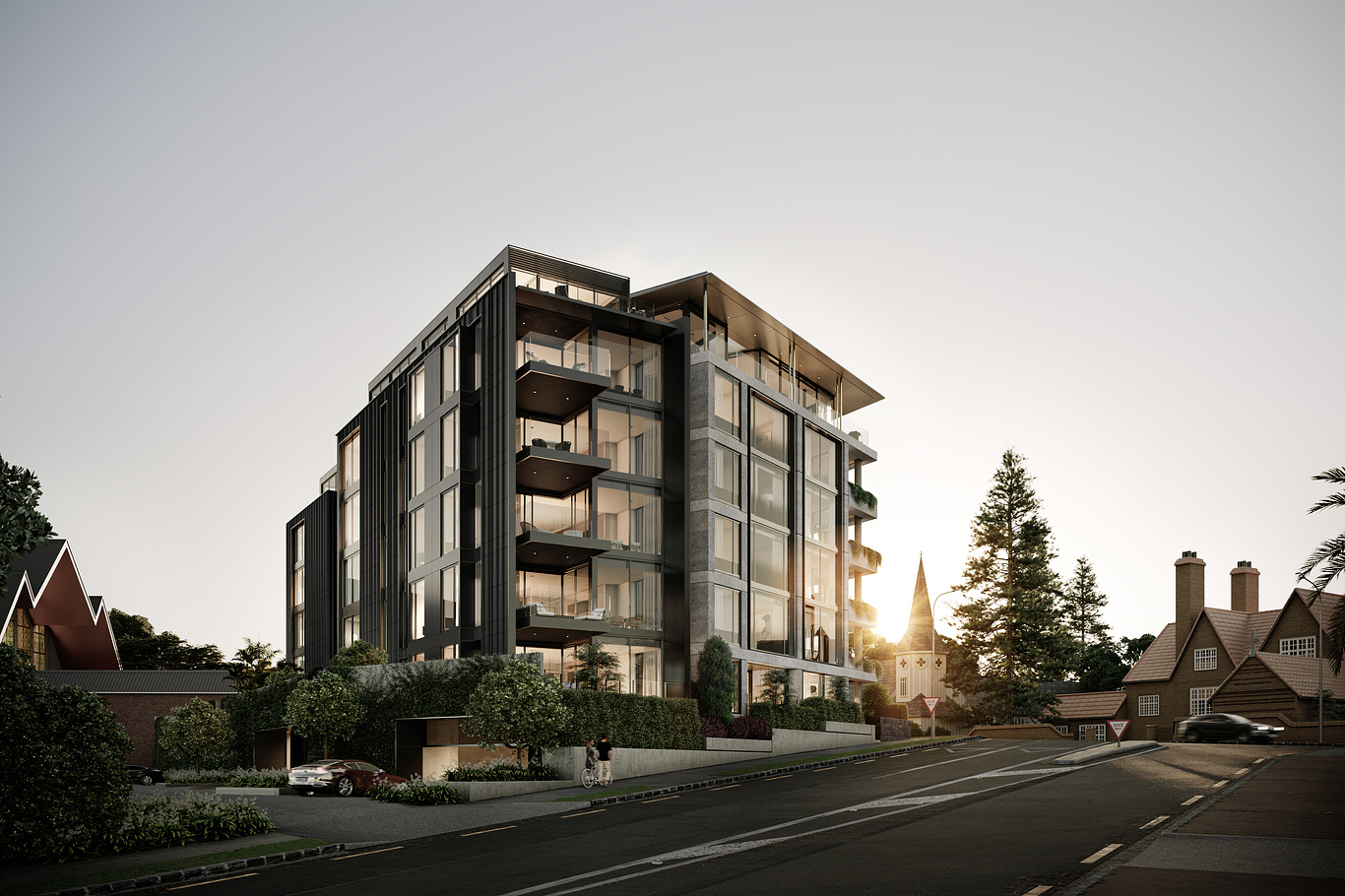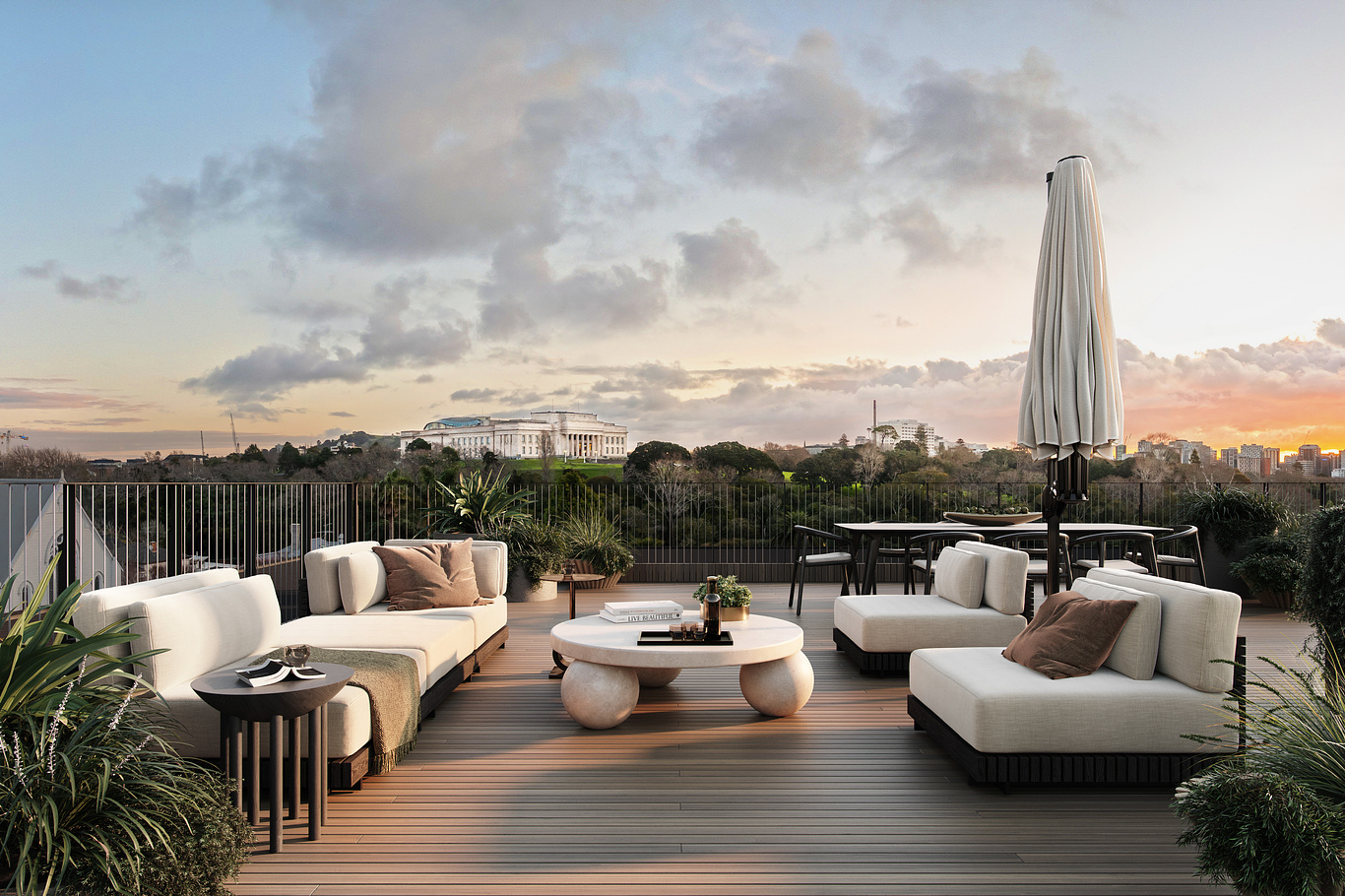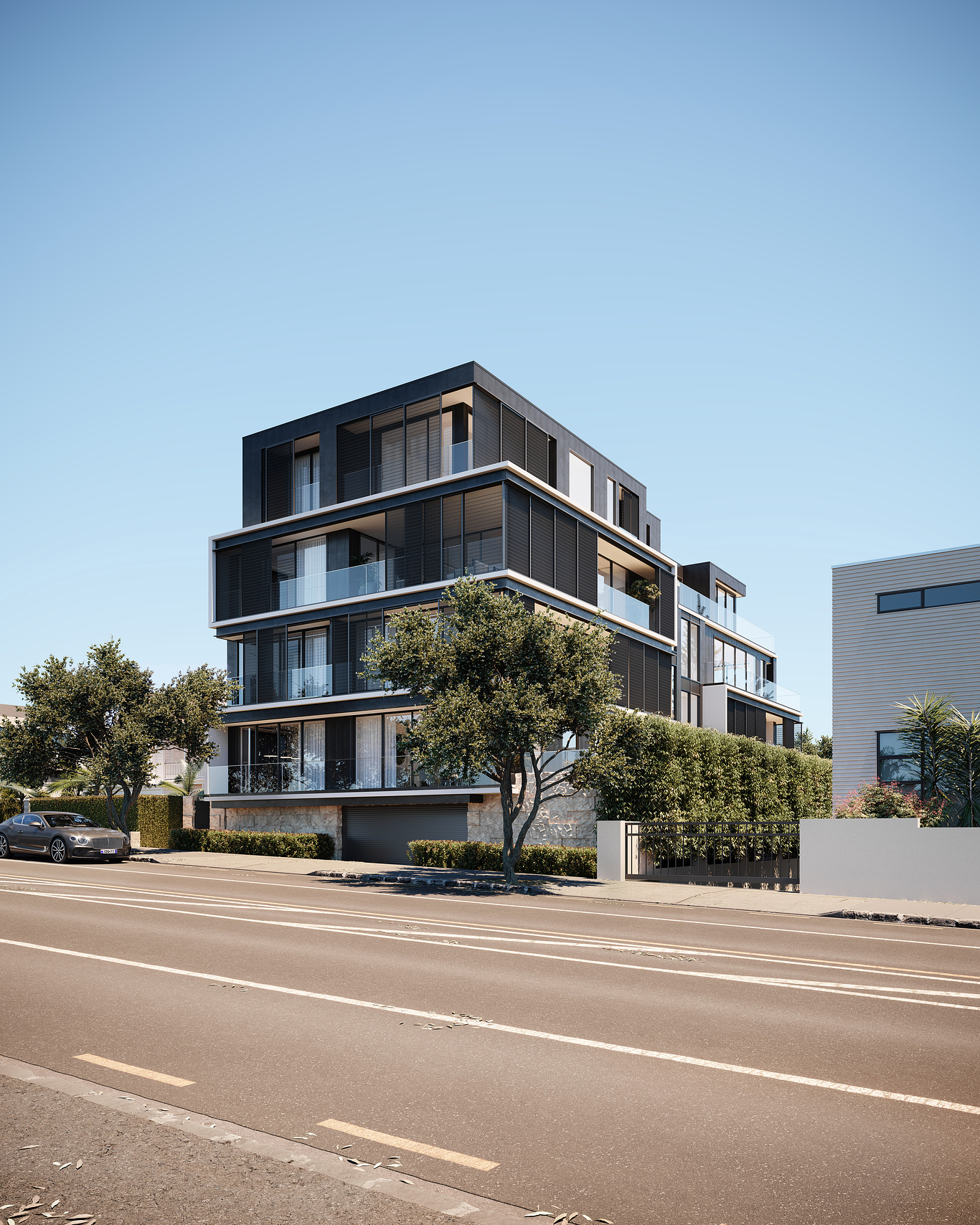
10 Questions With...
10 Questions with One to One Hundred
Welcome to another installment of "10 Questions With," a feature series on CGarchitect.com where we delve into the minds and practices of the world's leading visualization studios. This week, we sit down with One to One Hundred, an independent design and 3D practice founded in 2004, based in Auckland, New Zealand.
We had the pleasure of speaking with Jamie Holmes and David Hillier, the founders of One to One Hundred, an architectural visualization studio with a unique name and an inspiring journey. From their beginnings as graduate architects to becoming a leading force in the archviz industry, Jamie and David share their insights on their creative process, the evolution of their studio, and the challenges and future trends in architectural visualization. Let's dive into the story behind One to One Hundred and explore their vision for the future.
We had the pleasure of speaking with Jamie Holmes and David Hillier, the founders of One to One Hundred, an architectural visualization studio with a unique name and an inspiring journey. From their beginnings as graduate architects to becoming a leading force in the archviz industry, Jamie and David share their insights on their creative process, the evolution of their studio, and the challenges and future trends in architectural visualization. Let's dive into the story behind One to One Hundred and explore their vision for the future.
1- What inspired the name "One to One Hundred" for your studio?
When we were coming up with ideas for our company name, archviz was only just establishing itself as an industry. As we were working as graduate architects at the time, we were looking for something interesting and abstract that signalled that we associated our services with the world of architecture.
1:100 is the architectural scale that most designers naturally work in, so this name
represented the creativity and process of ideation that we loved about our work.
These days we can see that it’s a bit of an odd name for a 3D rendering company
that works at 1:1 in virtual space, but we still like the concept behind it.
2- How did the studio get its start, and what was the vision behind its inception?
One to One Hundred was founded by Jamie Holmes and David Hillier in 2004. We became friends while studying Architecture at Auckland University, and then joined the same architecture firm shortly after graduating. At this point, watercolour sketches were the most common off-plan marketing tool, and the few professional renders we saw being done in the market were pretty lacklustre.
Having dabbled in 3D at architecture school, we felt we could do better, so we
purchased some powerful workstations and founded the company later that year.
Our plan was to run the business outside of office hours, but the demand for our
services grew quickly enough that we had both went fulltime on One to One Hundred
within the year.
Being so young at the time, we didn’t have a strong vision for what we wanted to
achieve long-term, but we did believe that architectural visualization was going to
take off, and that we had the talent, creativity and drive to make it into a successful
business.
Our grand vision came later when we decided to expand our services to include
strategy and brand design. Combining these outputs made us a pivotal member of the project team, allowing us to lead the marketing and shape every aspect of how a development was taken to market.
When we were coming up with ideas for our company name, archviz was only just establishing itself as an industry. As we were working as graduate architects at the time, we were looking for something interesting and abstract that signalled that we associated our services with the world of architecture.
1:100 is the architectural scale that most designers naturally work in, so this name
represented the creativity and process of ideation that we loved about our work.
These days we can see that it’s a bit of an odd name for a 3D rendering company
that works at 1:1 in virtual space, but we still like the concept behind it.
2- How did the studio get its start, and what was the vision behind its inception?
One to One Hundred was founded by Jamie Holmes and David Hillier in 2004. We became friends while studying Architecture at Auckland University, and then joined the same architecture firm shortly after graduating. At this point, watercolour sketches were the most common off-plan marketing tool, and the few professional renders we saw being done in the market were pretty lacklustre.
Having dabbled in 3D at architecture school, we felt we could do better, so we
purchased some powerful workstations and founded the company later that year.
Our plan was to run the business outside of office hours, but the demand for our
services grew quickly enough that we had both went fulltime on One to One Hundred
within the year.
Being so young at the time, we didn’t have a strong vision for what we wanted to
achieve long-term, but we did believe that architectural visualization was going to
take off, and that we had the talent, creativity and drive to make it into a successful
business.
Our grand vision came later when we decided to expand our services to include
strategy and brand design. Combining these outputs made us a pivotal member of the project team, allowing us to lead the marketing and shape every aspect of how a development was taken to market.
3- How do you approach blending reality and imagination in your visualizations?
As a studio, we always strive for realism in our renders. We imagine most studios
would say this, but we are talking about more than achieving a photorealistic result. We take pride in knowing that we’re not misleading purchasers, and that our artistic skill is in finding the best moments in any project and knowing how to showcase them without cheating reality.
This ethos of accuracy is demonstrated in many ways, but especially in sun direction, outlook, furniture scale, architectural detailing, and modelling accurate surroundings for our exterior renders. Everything we do is part of imagining what a project will be like when it is built, so the challenge is to find beauty and perfection in the constraints.
4- What are the key challenges in architectural visualization today?
Renders – even great ones – are still seen as a commodity globally and are generally expected to be delivered on a fixed fee with allowance for feedback and design tweaks. The challenge to our industry as a whole is how to be constantly creative and striving for excellence when you are always fighting against the clock. Finding time to upskill, test out different lighting or furniture arrangements, or simply play with a scene just eats into an already tight budget. Clients don’t care if the architect’s model is missing detail, or that you were given an out-of-date resource; it just needs to be fixed. With globalisation, if you push back or bump up your prices too much, it’s easy enough for clients to go elsewhere.
Until clients start to truly appreciate the skill, artistry and value our services bring to their projects, the visualization industry will continue to cannibalize itself in a race to the bottom. This descent will only be fuelled by AI, and the perception that it can do half our work for us.
As businesses, we need to accept globalisation and make it work for us by re- examining our workflows, technology, team structure and sales strategy to be more global ourselves. We need to make AI work for us, producing better quality work faster and cheaper. We need to adapt to the growing power of Unreal and other gaming software. We need to open ourselves up to new markets and find projects where our specific aesthetic and sensibilities are valued.
There’s too much disruption happening to stick with the status quo; it’s time to forge a better industry where creativity, artistry and accuracy are the drivers of success.
As a studio, we always strive for realism in our renders. We imagine most studios
would say this, but we are talking about more than achieving a photorealistic result. We take pride in knowing that we’re not misleading purchasers, and that our artistic skill is in finding the best moments in any project and knowing how to showcase them without cheating reality.
This ethos of accuracy is demonstrated in many ways, but especially in sun direction, outlook, furniture scale, architectural detailing, and modelling accurate surroundings for our exterior renders. Everything we do is part of imagining what a project will be like when it is built, so the challenge is to find beauty and perfection in the constraints.
4- What are the key challenges in architectural visualization today?
Renders – even great ones – are still seen as a commodity globally and are generally expected to be delivered on a fixed fee with allowance for feedback and design tweaks. The challenge to our industry as a whole is how to be constantly creative and striving for excellence when you are always fighting against the clock. Finding time to upskill, test out different lighting or furniture arrangements, or simply play with a scene just eats into an already tight budget. Clients don’t care if the architect’s model is missing detail, or that you were given an out-of-date resource; it just needs to be fixed. With globalisation, if you push back or bump up your prices too much, it’s easy enough for clients to go elsewhere.
Until clients start to truly appreciate the skill, artistry and value our services bring to their projects, the visualization industry will continue to cannibalize itself in a race to the bottom. This descent will only be fuelled by AI, and the perception that it can do half our work for us.
As businesses, we need to accept globalisation and make it work for us by re- examining our workflows, technology, team structure and sales strategy to be more global ourselves. We need to make AI work for us, producing better quality work faster and cheaper. We need to adapt to the growing power of Unreal and other gaming software. We need to open ourselves up to new markets and find projects where our specific aesthetic and sensibilities are valued.
There’s too much disruption happening to stick with the status quo; it’s time to forge a better industry where creativity, artistry and accuracy are the drivers of success.
5- Can you walk us through your creative process for a typical project?
In our studio, each artist works on an image from camera to final production. For
smaller projects, the artist will usually take on the whole project to achieve consistency and economies across the job; for larger projects, we will usually create a project team.
We are careful to play to each artist’s strengths in the choice of jobs, and especially so when it comes to our flagship residential marketing sets. We generally do a kick-off meeting with the project team and the two founders. We cover off the brief, look at similar projects and talk about challenges, timelines, resourcing, photography, brand, styling and anything else that will impact the renders.
From here (like most studios), we clean and optimise the architect’s model, then do cameras for all the shots. We tend to scope our own sets, so we will usually know what cameras we need to set up, but it’s always satisfying to find great angles you hadn’t thought of.
We put a lot of time and effort into these ‘white cards’, often blocking up the surrounding exterior environment and loosely dressing the interiors just to make sure we’re not caught out further down the line with a camera or scene that doesn’t really work. This set of cameras goes to the client and other designers for approval and as a check that we have the correct resources and scope.
From here, we back ourselves to push the renders through to a 90% complete draft including post-production (in our experience, showing clients work-in-progress just causes them unnecessary anxiety). We’ll try to get all the detail provided into the renders at this point to minimise the amount of feedback that might come back from the design team.
We always do an internal review of every image before it goes to the client to ensure the render meets our house standards. Second drafts are ideally a formality (with only minor feedback but this isn’t always the case), with a little bit more polishing as we move to our final render. On larger sets, we will often use the second draft to bring cohesion across the details, styling and grading.
All the above aside - no matter where we are in the timeline - if we believe there’s a change that will improve a render, big or small, we’ll make it. We’ve built our business by placing quality above all else, regardless of the project or budget.
6- How has technology changed the landscape of architectural visualization?
Between Unreal and AI, there have been huge technological disruptions threatening the archviz landscape for many years now.
The rise of Unreal in archviz seems to have segmented the industry with specialist companies dedicating their teams and services to real-time interactive media. While these services have been positively received by developers and real estate agents, they haven’t replaced traditional high-quality stills and animations to the degree we thought they might a few years ago. We feel this points to the fact that renders still provide the most value across the main print, digital and social media channels. If and when real-time content can be integrated better into the online world – or the online world takes the giant step into the metaverse – all this may change. But given the pace of change here seems slow, we don’t feel any pressure to abandon our core services.
The same cannot be said for AI. We don’t think there is any archviz artist or business owner out there that is not a little taken back by the rapid progress of AI, or the mood, detail and realism it can achieve so quickly. We still believe that there are a number of key barriers that still protect our craft – mostly around specificity of design, location and outlook – but none that seem insurmountable with the global hype and energy pouring into advancement of the technology in all creative fields.
Like many other companies, we are just doing our best to keep up with these advancements, integrating them into our workflow where we can. We now devote a lot of time to R+D when we discover new areas that might improve our work. This hasn’t improved our bottom line yet, but it has improved the quality of our work.
In our studio, each artist works on an image from camera to final production. For
smaller projects, the artist will usually take on the whole project to achieve consistency and economies across the job; for larger projects, we will usually create a project team.
We are careful to play to each artist’s strengths in the choice of jobs, and especially so when it comes to our flagship residential marketing sets. We generally do a kick-off meeting with the project team and the two founders. We cover off the brief, look at similar projects and talk about challenges, timelines, resourcing, photography, brand, styling and anything else that will impact the renders.
From here (like most studios), we clean and optimise the architect’s model, then do cameras for all the shots. We tend to scope our own sets, so we will usually know what cameras we need to set up, but it’s always satisfying to find great angles you hadn’t thought of.
We put a lot of time and effort into these ‘white cards’, often blocking up the surrounding exterior environment and loosely dressing the interiors just to make sure we’re not caught out further down the line with a camera or scene that doesn’t really work. This set of cameras goes to the client and other designers for approval and as a check that we have the correct resources and scope.
From here, we back ourselves to push the renders through to a 90% complete draft including post-production (in our experience, showing clients work-in-progress just causes them unnecessary anxiety). We’ll try to get all the detail provided into the renders at this point to minimise the amount of feedback that might come back from the design team.
We always do an internal review of every image before it goes to the client to ensure the render meets our house standards. Second drafts are ideally a formality (with only minor feedback but this isn’t always the case), with a little bit more polishing as we move to our final render. On larger sets, we will often use the second draft to bring cohesion across the details, styling and grading.
All the above aside - no matter where we are in the timeline - if we believe there’s a change that will improve a render, big or small, we’ll make it. We’ve built our business by placing quality above all else, regardless of the project or budget.
6- How has technology changed the landscape of architectural visualization?
Between Unreal and AI, there have been huge technological disruptions threatening the archviz landscape for many years now.
The rise of Unreal in archviz seems to have segmented the industry with specialist companies dedicating their teams and services to real-time interactive media. While these services have been positively received by developers and real estate agents, they haven’t replaced traditional high-quality stills and animations to the degree we thought they might a few years ago. We feel this points to the fact that renders still provide the most value across the main print, digital and social media channels. If and when real-time content can be integrated better into the online world – or the online world takes the giant step into the metaverse – all this may change. But given the pace of change here seems slow, we don’t feel any pressure to abandon our core services.
The same cannot be said for AI. We don’t think there is any archviz artist or business owner out there that is not a little taken back by the rapid progress of AI, or the mood, detail and realism it can achieve so quickly. We still believe that there are a number of key barriers that still protect our craft – mostly around specificity of design, location and outlook – but none that seem insurmountable with the global hype and energy pouring into advancement of the technology in all creative fields.
Like many other companies, we are just doing our best to keep up with these advancements, integrating them into our workflow where we can. We now devote a lot of time to R+D when we discover new areas that might improve our work. This hasn’t improved our bottom line yet, but it has improved the quality of our work.
7- Could you share insights on a particularly challenging or unique project?
The most challenging projects are the ones that come with the highest of expectations but the least amount of design. We worked on a mixed-use tower refurbishment called 280 Central. Our brief from the client gave us carte blanche to turn a basic shell into a visionary retail and commercial precinct. We were tasked with scoping our own render set by designing and modelling all the spaces we felt would communicate the potential of this building. Every detail in the render – from the planning and fitout to the activity and people - was generated by out talented 3d team to tell a visual story of this aspirational and progressive workplace.
Rather than tackle all the images at once, we focused on a few key precedent images which we perfected before moving onto the dozen others. We also ensured that we had worked out functional planning for each space before blocking it up in 3D so that the end result felt believable.
During the project, we kept returning to our precedent renders to add in extra details that tied them into the new renders we were creating – an iterative process which gave a cohesive, connected polish to the final image set.
8- What are the future trends you foresee in this industry?
We believe there are a number of trends that will disrupt the archviz industry in the coming years. Globalisation is already upon us, but this will be followed by an increase in freelancers competing with companies by providing a leaner, more cost-effective service. In order to capture this demand, we foresee a rise in aggregator platforms to make finding a freelancer easier.
For many years, architects have been providing in-house renders to clients from Enscape and other render plugins. The output from these programs continues to edge closer to the quality of rendering from specialist rendering firms, which will eventually eat into our industry, or at least push us to innovate into new outputs to maintain our value.
We expect AI to move into real-time, interactive outputs, creating the same levels of disruption as it has to images and video. It’s likely that it could take years before the output is specific enough and error-free to use for marketing – but it is coming. And in the short term, there will inevitably be companies trying to pass off AI as renders. All we can hope is that clients and designers are astute enough to appreciate that ‘close’ is not good enough.
The most challenging projects are the ones that come with the highest of expectations but the least amount of design. We worked on a mixed-use tower refurbishment called 280 Central. Our brief from the client gave us carte blanche to turn a basic shell into a visionary retail and commercial precinct. We were tasked with scoping our own render set by designing and modelling all the spaces we felt would communicate the potential of this building. Every detail in the render – from the planning and fitout to the activity and people - was generated by out talented 3d team to tell a visual story of this aspirational and progressive workplace.
Rather than tackle all the images at once, we focused on a few key precedent images which we perfected before moving onto the dozen others. We also ensured that we had worked out functional planning for each space before blocking it up in 3D so that the end result felt believable.
During the project, we kept returning to our precedent renders to add in extra details that tied them into the new renders we were creating – an iterative process which gave a cohesive, connected polish to the final image set.
8- What are the future trends you foresee in this industry?
We believe there are a number of trends that will disrupt the archviz industry in the coming years. Globalisation is already upon us, but this will be followed by an increase in freelancers competing with companies by providing a leaner, more cost-effective service. In order to capture this demand, we foresee a rise in aggregator platforms to make finding a freelancer easier.
For many years, architects have been providing in-house renders to clients from Enscape and other render plugins. The output from these programs continues to edge closer to the quality of rendering from specialist rendering firms, which will eventually eat into our industry, or at least push us to innovate into new outputs to maintain our value.
We expect AI to move into real-time, interactive outputs, creating the same levels of disruption as it has to images and video. It’s likely that it could take years before the output is specific enough and error-free to use for marketing – but it is coming. And in the short term, there will inevitably be companies trying to pass off AI as renders. All we can hope is that clients and designers are astute enough to appreciate that ‘close’ is not good enough.
9- How do you ensure client satisfaction and manage expectations in such a
detail-oriented field?
We’ve always prided ourselves on exceeding our clients’ expectations, especially in regards to detail. We believe that accuracy and attention to detail makes renders look better while also making them more valuable as a marketing tool. For this reason, our management team spend a lot of our time reviewing resources, clarifying queries with designers and clients, and working through issues with our 3D team. By having multiple sets of eyes on every project – and a robust project management and mark-up software – we ensure very few errors get through. We also like to think that if an image looks amazing, the client has less reason to pick it apart, so we’ll always aim to have a high quality first draft.
10- Lastly, where do you see One to One Hundred in the next 5 years, and what are your goals for the studio's future?
Our primary goal for the business is to become more global in the next 5 years. Whilst we’ve enjoyed playing our part in building New Zealand, it is very risky to be so dependent on one market for the majority of your workload (we certainly found this out last year!).
We are therefore looking to expand into markets where we think we will be competitive from a quality vs cost perspective. We’ve already had some success breaking into the U.S. market through a partnership with a local branding agency. We hope this partnership will continue to grow, not just because of the extra revenue, but because of the opportunities to work on large, high-profile developments with a trendy, well-connected agency.
If we could leverage our rendering work in the U.S. to break into other big international markets, or to take our strategy and branding services to the world, this would be even more exciting.
detail-oriented field?
We’ve always prided ourselves on exceeding our clients’ expectations, especially in regards to detail. We believe that accuracy and attention to detail makes renders look better while also making them more valuable as a marketing tool. For this reason, our management team spend a lot of our time reviewing resources, clarifying queries with designers and clients, and working through issues with our 3D team. By having multiple sets of eyes on every project – and a robust project management and mark-up software – we ensure very few errors get through. We also like to think that if an image looks amazing, the client has less reason to pick it apart, so we’ll always aim to have a high quality first draft.
10- Lastly, where do you see One to One Hundred in the next 5 years, and what are your goals for the studio's future?
Our primary goal for the business is to become more global in the next 5 years. Whilst we’ve enjoyed playing our part in building New Zealand, it is very risky to be so dependent on one market for the majority of your workload (we certainly found this out last year!).
We are therefore looking to expand into markets where we think we will be competitive from a quality vs cost perspective. We’ve already had some success breaking into the U.S. market through a partnership with a local branding agency. We hope this partnership will continue to grow, not just because of the extra revenue, but because of the opportunities to work on large, high-profile developments with a trendy, well-connected agency.
If we could leverage our rendering work in the U.S. to break into other big international markets, or to take our strategy and branding services to the world, this would be even more exciting.

One to One Hundred
We are experts in strategy, branding and 3D visualisation for architecture, property and place.Co-founded in 2004 by David Hillier and Jamie Holmes, One to One Hundred has grown from a boutique architectural visualisation studio into a multidisciplinary creative studio working with developers, agents and designers to deliver compelling brands and visuals for property developments
You must be logged in to post a comment. Login here.
About this article
Welcome to another installment of "10 Questions With," a feature series on CGarchitect.com where we delve into the minds and practices of the world's leading visualization studios. This week, we sit down with One to One Hundred, an independent design and 3D practice founded in 2004, based in Auckland, New Zealand.
visibility400
favorite_border3
mode_comment0


